#roberta close icon
Text
Heaven, I'm in heaven...
Script below the break
Hello and welcome back to The Rewatch Rewind! My name is Jane, and this is the podcast where I count down my top 40 most frequently rewatched films in a 20-year period. Today I will be discussing number five on my list: RKO’s 1935 musical comedy Top Hat, directed by Mark Sandrich, written by Allan Scott and Dwight Taylor, and starring Fred Astaire and Ginger Rogers.
American dancer Jerry Travers (Fred Astaire) comes to London to star in a show produced by his friend Horace Hardwick (Edward Everett Horton). The night before the show opens, Jerry’s tapdancing in Horace’s hotel room awakens model Dale Tremont (Ginger Rogers) in the room below. She calls the manager to complain, who calls the room above hers, and Horace answers the phone. Because he can’t hear over Jerry’s dancing, he leaves to see what the manager wants. Tired of waiting for the noise to stop, Dale storms upstairs to confront the dancer. Upon seeing her, Jerry immediately falls in love, and the next day he starts following her around in a mildly creepy but mostly charming way. However, he never tells her his name, and when Dale learns that her friend Madge Hardwick (Helen Broderick)’s husband is staying in the room above hers, she naturally assumes that Jerry is Horace Hardwick. All of this results in much confusion, hilarity, and of course, dancing.
Top Hat was one of the many old movies that my mom introduced me to in 2002, and it has been among my favorite films ever since. I had already seen it several times before I started keeping track, and then I watched it five times in 2003, three times in 2004, three times in 2005, once in 2006, once in 2009, twice in 2010, three times in 2011, four times in 2012, once each in 2013, 2014, 2016, 2017, and 2018, twice in 2020, once in 2021, and once in 2022. This was the first Fred and Ginger movie I ever saw, and while I’ve since watched and enjoyed all nine others multiple times, none could top Top Hat, in my opinion.
This was the fourth film that Fred and Ginger made together, but only the second in which they had starring roles, and the first that was written specifically for them. Two of their previous films – 1933’s Flying Down to Rio and 1935’s Roberta – gave them relatively small parts, although their scenes were unquestionably the highlights. In Flying Down to Rio, they got fourth and fifth billing and are barely in it, but they caused a splash with their one dance number, and an iconic duo was born. They got second and third billing in Roberta, in which they basically function as the B romantic pair, with Irene Dunne and Randolph Scott as the A couple. Fred and Ginger’s first starring roles had been in 1934’s The Gay Divorcee, which was an adaptation of the Broadway musical Gay Divorce. Critics of Top Hat (including Astaire himself) complained that it was basically a rehash of The Gay Divorcee, and like, I can see their point: both films have a weird mistaken identity story and feature essentially the same cast filling very similar roles – with the notable change from Alice Brady to Helen Broderick in the “Ginger’s older relative/friend” role. But while I also enjoy The Gay Divorcee, somehow I feel like Top Hat just works better. The story makes at least a little bit more sense, and they didn’t devote a quarter of the runtime to a single interminable musical number like The Gay Divorcee did with the frickin Continental… although The Piccolino came dangerously close to replicating that. After Top Hat, Fred and Ginger made five more films with RKO in the 1930s: 1936’s Follow the Fleet, in which they were basically the B couple like they had been in Roberta, although they did get top billing in this one; 1936’s Swing Time, which is mostly very good and would probably have made it onto this podcast if not for that one blackface number; 1937’s Shall We Dance, which I kind of slept on for a while but now I think is probably my second favorite of theirs, although the ending drags a bit; 1938’s Carefree, possibly their weirdest movie, which involves hypnotism; and 1939’s The Story of Vernon and Irene Castle, which I find to be disappointingly forgettable. Then, after 10 years apart, they reunited for MGM’s The Barkleys of Broadway in 1949, which is basically Fred and Ginger fan fiction and it makes me so happy that it exists.
While there were lots of other dancing musicals being made in Hollywood around this time, the Astaire/Rogers ones feel like their own genre, and not just because of the stars. I think a big part of what makes Top Hat feel like the quintessential Fred and Ginger film is the supporting cast. Edward Everett Horton, Helen Broderick, Erik Rhodes, and Eric Blore were each in at least one other Fred and Ginger movie, but this is the only one that has all four of them. Edward Everett Horton excelled at playing the kind of guy who thinks he’s in control of every situation, but actually has no clue what’s going on, and he’s especially in his element as Horace Hardwick, convinced that he can get to the bottom of everyone’s strange behavior while never suspecting that he could end all the confusion just by meeting Dale. Helen Broderick delivers wisecracks in a brilliantly dry, cynical tone that contrasts with Horton’s bumbling to great comedic effect. Their characters don’t seem to have a very functional marriage, but they also don’t really seem to mind that. Typically the “haha, married couples hate each other” types of jokes really irritate me, but Horace and Madge are such ridiculous characters that it’s actually kind of funny when they do it. And then there’s Erik Rhodes, whose absurdly over-the-top Italian characterization in Top Hat and The Gay Divorcee so offended Mussolini that both those films were banned in Italy. Personally I feel like Top Hat’s portrayal of Venice as a giant white soundstage is probably more insulting to Italians than a guy doing a bad accent and being silly is, but I don’t know, maybe it’s still offensive. To me, as a non-Italian, I just think Erik Rhodes is very funny as Alberto Beddini, the dressmaker whose clothes Dale is modeling. He has some truly excellent lines, like, “Never again will I allow women to wear my dresses!” and “I am no man; I am Beddini!” Despite his declarations of love for Dale, he is extremely queer-coded, while also interestingly being one of the most masculine characters in the film, which is…kind of the opposite of how male characters are typically queer-coded. So Alberto is very silly but also quite fascinating. Eric Blore was in half of the Fred and Ginger movies and he’s always hilarious. In Top Hat he plays Horace’s valet, Bates, who always refer to themselves in the plural (“We are Bates, sir”), so the next time someone complains to you about this so-called newfangled trend of young people messing with pronouns, feel free to point out that at least one middle-aged man was doing that way back in 1935. One of my favorite exchanges in the movie is when Horace is trying to explain to Bates that Jerry seems to have gotten into a perilous situation with a woman by saying, “He has practically put his foot right into a hornets’ nest” and Bates respond with, “But hornets’ nests grow on trees, sir.” “Never mind that. We have got to do something.” “What about rubbing it with butter, sir?” “You blasted fool, you can’t rub a girl with butter!” “My sister got into a hornets’ nest and we rubbed HER with butter, sir!” “That’s the wrong treatment, you should have used mud – never mind that!” It has nothing to do with anything but it makes me laugh every time. This supporting cast adds a silly, somewhat Vaudevillian aspect to Top Hat that no Fred and Ginger film would be complete without.
Of course, Fred and Ginger movies are better known for a different somewhat Vaudevillian aspect: their songs. It’s very interesting to watch Top Hat from a musical history perspective because it was made before the advent of the book musical – that is, a show where the songs are fully integrated into the story and used to tell a specific narrative. The songs in this movie do sort of advance the plot, but the lyrics are generic enough that they stand alone completely out of context. It’s kind of a bridge between the disjointed songs and scenes of vaudeville and the continuously flowing story of book musicals. All the music in Top Hat was written by the legendary Irving Berlin, including two solo numbers for Fred: “No Strings (I’m Fancy Free)” which is what Jerry is dancing to in the hotel when he disturbs Dale, and “Top Hat, White Tie and Tails” which is part of his show; and three numbers for both Fred and Ginger to dance to: “Isn’t This a Lovely Day (to Be Caught in the Rain)?” for soon after they meet, before Dale thinks that Jerry is Horace, “Cheek to Cheek” when they’re in love but Dale is conflicted because she thinks he’s married to Madge, who is confusingly encouraging them to dance, and “The Piccolino” after Dale finally learns Jerry’s true identity. Both Astaire and Rogers were significantly better dancers than singers, but typically Fred did most of the singing, and the only song he doesn’t sing in Top Hat is the Piccolino, apparently because he didn’t like it, so Ginger sings it first and then an offscreen chorus repeats it. My favorite number in the film has always been “Isn’t this a Lovely Day (to Be Caught in the Rain)?” because I love the way Jerry starts dancing fancier and fancier and is pleasantly surprised that Dale can keep up with him, and it’s fun that Ginger got to wear pants for once, and I also just really enjoy that song. There was a time soon after I first fell in love with this movie when I tried to make saying the word “lovely” a lot part of my personality, mainly inspired by this song. I truly enjoy all the numbers, even if I do think The Piccolino goes on a bit too long, although, again, it’s not nearly as painfully long as The Continental in The Gay Divorcee, which it’s clearly meant to pay homage to. But Fred and Ginger’s most famous dance number – certainly in this film, and also probably in any of their films – is “Cheek to Cheek.” It is pure, breathtaking magic, and even knowing about the major drama with Ginger’s dress in no way detracts from that.
I’ve heard a few different accounts of the dress drama with slightly conflicting details, but what they all seem to agree on is that Ginger Rogers insisted that a low-backed, light blue, ostrich feather dress would look perfect during the “Cheek to Cheek” dance, and pretty much everybody else tried to talk her out of it, but she refused to back down until they were all forced to concede. And she was correct, it looks incredible, although if you’re watching closely you can see some feathers falling off while she dances, which was the main objection to the dress. Fred Astaire was reportedly extremely annoyed about the flying feathers, although he betrays none of that to the audience, and afterwards gave Ginger the nickname “Feathers,” which he continued to call her for many years. My interpretation of this is that it started as kind of an insult when he was genuinely upset about the incident but evolved to become more of a term of endearment, although obviously I don’t know for sure. As far as I can tell, apart from the occasional disagreement, Fred and Ginger got along pretty well in real life, although the studio sometimes invented or exaggerated stories about them fighting to try to generate more buzz. Personally I don’t think that was necessary; their talent spoke for itself, and audiences would have flocked to their films whether or not there was conflict offscreen.
One thing that I don’t like about old movies is that in general, most of the people who worked on them were deceased before DVDs were invented, which means that the special features are often lacking. I have watched Top Hat with commentary, but it’s by a film historian and Fred Astaire’s daughter who was born after this movie was made. It’s mostly the historian talking, but every once in a while Astaire’s daughter shares a memory of her father, and every. single. time. the historian responds with, in the most patronizing tone of voice I’ve ever heard, “Thank you for telling us that” and I hate it so much. But one thing that I did learn from the commentary that I definitely wouldn’t have noticed if nobody had told me is that Lucille Ball makes a very small appearance in this movie as a worker at the flower shop in the London hotel. She has a couple of lines, but even though I’m used to watching her in Stage Door, which was only made two years after Top Hat, I absolutely would never have recognized her. So that’s kind of fun.
Now, when it comes to watching Top Hat from an aroace perspective, even I cannot deny that this movie in general, and the “Cheek to Cheek” number specifically, is extremely romantic. The main storyline is Jerry immediately falling for Dale and flirting with her until she falls for him, and then her attempting to suppress her feelings when she thinks he’s married to her best friend. But somehow, even watching it as a young teen who had no idea that I was aroace, this felt different from other romantic films I’d seen. I remember feeling irritated the first time I read a description of Fred and Ginger’s dancing as their version of making love because “ugh, why do people have to make everything about sex?” It took me a while to realize that not only is that an apt description, but it’s also part of what drew me to them in the first place. Because despite the way the terms “making love” and “being intimate” are now used almost exclusively as synonyms for “having sex,” they don’t necessarily have to be. There are other ways of experiencing and expressing love and intimacy besides sex. It’s just that our allonormative society puts sex on such a high pedestal and portrays it as the One True Form of Intimacy that all other forms are devalued to the point that often they feel barely worth mentioning. And I do feel like when some people talk about Fred and Ginger this way, what they’re implying is “Their dances were the Hays Code era version of sex scenes.” And, granted, it’s quite possible that that was the intent. But nothing about their dancing is inherently sexual, and yet, it would be hard to deny that it’s extremely intimate. So as someone who craves non-sexual intimacy, in a world where that concept almost seems oxymoronic, it’s so encouraging to see these characters express that. Of course, I don’t want exactly what they have – for one thing, I’m a terrible dancer, despite my one year of tap lessons in 2nd grade. And for another, what they have is way too romantic for me. But although I could never have articulated this at the time, just seeing this example of extreme intimacy coming in other, non-sexual forms as a young obliviously asexual person was so important. It gave me some armor against the onslaught of allo- and amatonormative messages implying that sexual relationships are inherently more valuable and valid than any other kind of relationship. Top Hat ends with the implication that Jerry and Dale are about to get married, so I guess we’re meant to infer that their relationship will eventually become sexual, but I don’t see how anyone could watch this movie and still think that a sexless marriage consisting of dance numbers like “Cheek to Cheek” would be any less valid than a sexual marriage. Like so many of my favorite movies, it’s not exactly ace representation, but it’s easy to imagine many of the characters in Top Hat as ace, and often that’s as good as it gets.
While the subtle and probably unintentional message that sex doesn’t have to be the end all be all is great, the main reason I love this movie is because it’s just a lot of fun to watch. I’ll be the first to admit that the plot is a little ridiculous and doesn’t make a ton of sense, but I also have to admire the lengths they go to in order to maintain the mistaken identity for so long. Like the part when the London hotel manager tells Dale that Horace Hardwick is the gentleman with the briefcase and cane on the mezzanine, and Horace steps behind a chandelier before Dale can see him, and while she’s trying to get closer, Jerry runs up to Horace and says that he has a phone call, and Horace hands Jerry his briefcase and cane and rushes off, so Dale will see Jerry alone holding a briefcase and cane and therefore still think he is Horace. Or when Horace just happens to be in the bathtub when Dale comes into their room in Italy. Or how Jerry tells Madge that he’s met Dale so she doesn’t think she needs to introduce him. It’s like simultaneously the most far-fetched, bizarre plot imaginable and also kind of brilliantly executed, and I love it for that. And even if the plot doesn’t work for you, this movie is still worth watching for its truly phenomenal dancing by one of the most iconic pairs in Hollywood history.
Thank you for listening to me discuss another of my most frequently rewatched films. When compiling this list, I was very surprised to discover that Fred Astaire would only appear in one film, since I consider him one of my faves, but I hope he would at least be happy to know that that one film is in my top five. Next week, I will be talking about another Old Hollywood musical that I watched two more times than Top Hat, for a total of 33 views, which stars a man who is often compared to Fred Astaire, although I feel like, apart from being dancers, they were very different. So stay tuned for that, and as always, I will leave you with a quote from that next movie: “I make more money than…than…than Calvin Coolidge! Put together!”
6 notes
·
View notes
Text
A struggling young writer finds his life and work dominated by his unfaithful wife and his radical feminist mother, whose best-selling manifesto turns her into a cultural icon.
Credits: TheMovieDb.
Film Cast:
T.S. Garp: Robin Williams
Helen Holm: Mary Beth Hurt
Jenny Fields: Glenn Close
Roberta Muldoon: John Lithgow
Mr. Fields: Hume Cronyn
Mrs. Fields: Jessica Tandy
The Hooker: Swoosie Kurtz
Pooh: Brenda Currin
John Wolfe: Peter Michael Goetz
Cushie: Jenny Wright
Referee: John Irving
Ellen James: Amanda Plummer
Woman Candidate: Bette Henritze
Rachel: Katherine Borowitz
Real Estate Lady: Kate McGregor-Stewart
Michael Milton: Mark Soper
Stew Percy: Warren Berlinger
Ernie Holm: Brandon Maggart
First Coach: Victor Magnotta
Helicopter Pilot: Al Cerullo
Stephen: Ron Frazier
Marge Tallworth: Eve Gordon
Pilot (uncredited): George Roy Hill
Film Crew:
Producer: George Roy Hill
Screenplay: Steve Tesich
Novel: John Irving
Editor: Stephen A. Rotter
Director of Photography: Miroslav Ondříček
Producer: Robert Crawford Jr.
Executive Producer: Patrick Kelley
Casting: Marion Dougherty
Production Design: Henry Bumstead
Art Direction: Woods Mackintosh
Set Decoration: Robert Drumheller
Set Decoration: Justin Scoppa Jr.
Costume Design: Ann Roth
Hairstylist: Bob Grimaldi
Makeup Artist: Robert Laden
Movie Reviews:
#based on novel or book#childlessness#gay theme#homosexuality#love#paternity#pregnancy#Top Rated Movies#typewriter#wrestler#wrestling#writer
0 notes
Photo

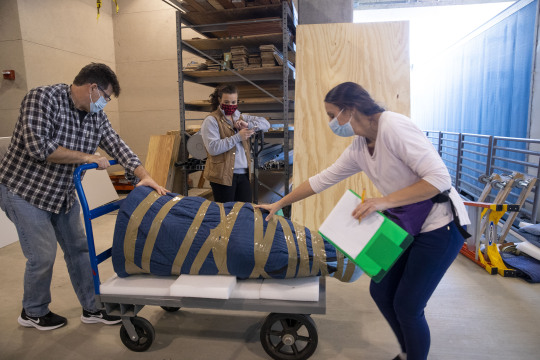

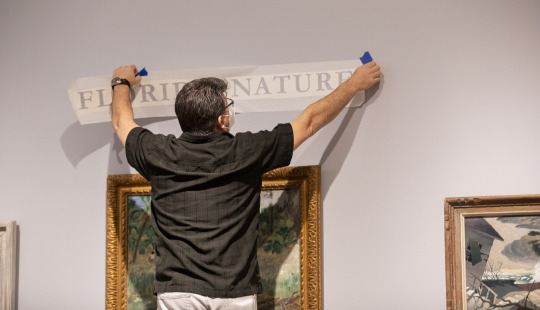

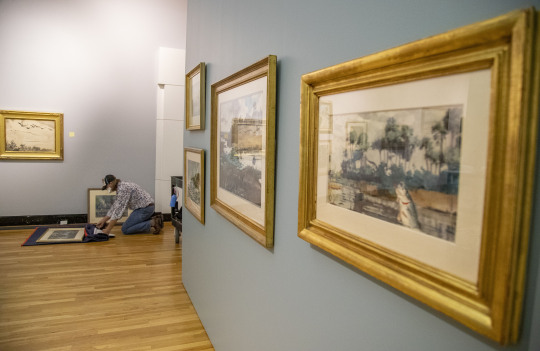




The Vickers Family Art Collection Arrives at the Harn Museum
It’s moving day and the massive collection of Florida art has arrived at the Harn Museum of Art. Thanks to an extraordinary donation from Sam and Robbie Vickers, their once-private collection has found its public “forever home” at the Harn Museum of Art at the University of Florida. Over a few days, I was able to document the behind the scenes process as Harn staff excitedly welcomed a truckload of more than 1,200 drawings, oil paintings, and watercolors — the largest single art collection ever gifted to the university.
The inaugural exhibition, A Florida Legacy: Gift of Samuel H. and Roberta T. Vickers, opens Feb. 26 and runs through Aug. 1, 2021. Art lovers will be able to marvel up close at Robert J. Curtis’s iconic 1838 portrait of Seminole leader Osceola; Winslow Homer’s action-filled Foul Hooked Black Bass; John Singer Sargent’s masterful Palm Thicket; Martin Johnson Heade’s rare Oleanders; Ralston Crawford’s soaring Overseas Highway #2; and Jane Peterson’s vibrant gouache, Toucans, Parrot Jungle — to name just a few of the delights on view.
#sam vickers#robert vickers#art collection#florida art#american artist#Winslow Homer#Robert J Curtis#Osceola#John Singer Sargent#Martin Johnson Heade#Jane Peterson#A Florida Legacy#Samuel P Harn Museum of Art#Harn Museum of Art#Harn Museum#uf#university of florida#aaron daye photography
0 notes
Text
Mucha Libre - Film Review: Cassandro ★★★1/2

Who would have ever expected a film set in the ultra macho, extremely homophobic world of lucha libre wrestling to serve as a celebration of women and effeminate gay men? Director Roger Ross Williams along with co-writer David Teague have crafted such an experience with their biopic, Cassandro, the true story of Saúl Armendáriz, an underdog who achieved legendary status against all odds. With a fearless, career-defining performance by Gael García Bernal, this queer Rocky story has plenty of laughs and charm, but it also has real power in how it challenges gender conventions. It’s such a joy falling in love with Saúl.
When we first meet him, he’s an out gay, skinny 18-year-old living with his single mother Yocasta (the fantastic Perla De La Rosa) in late 1980s El Paso. His religious father left them when Saúl came out a few years prior, so he and his mom share a close bond. He works as an exótico in nearby Juárez, Mexico. Unlike the masked lucha libre wrestlers, exóticos don’t hide their faces and exist as the flamboyantly gay punching bags who purposefully lose their bouts to their more macho opponents while also getting brutally heckled by the audiences. Think of it as professional queer bashing. Undeterred and clearly made of stronger stuff, Saúl’s wheels start to turn after losing bout after bout.
Inspired by the women in his life such as his strong, courageous mother and his gutsy trainer Sabrina (an engaging Roberta Colindrez), Saúl creates his alter-ego, Cassandro, who sports leopard print leotards as well as makeup inspired by Yocasta, and vows to be the first exótico who wins. When he first enters the ring as Cassandro, defiantly baiting the booing crowd, feeding off of their slurs, camping it up wildly, his big gay hair flipped back just so, you can’t help but root for him. Just seeing him not bat an eye as he takes on a wrestler three times his size and give him a run for his money should inspire anyone who has ever felt threatened by a bully.
By this point, Teague and Williams have done such a great job of letting us fall in love with Saúl, warts and all. Sure, we may see him party perhaps a bit too hard and maybe trust people a little too easily, but his steadfast belief in himself keeps you riveted. His secret relationship with a closeted married fellow wrestler, soulfully played by Raúl Castillo, seems like a bad idea from the jump. Early on, he secures a manager, Lorenzo (Joaquín Cosío) who has a loving way of cheering Saúl on, but he also has an assistant Felipe, played nimbly by music superstar Bad Bunny (aka Benito Antonio Martínez Ocasio) who provides an endless supply of cocaine whenever needed. This dichotomy goes under-explored and could have provided a little more conflict. Much of the external conflict, in fact, gets a little glossed over.
Regardless, Saúl’s journey has enough riches without it, culminating in a series of crowd-pleasing sequences guaranteed to get you cheering and turn on the waterworks. It also contains a brief, powerful scene which provides every queer person with the tools for how to respond to a parent who has rejected their child. Bernal’s performance in this scene, as he gazes directly into the camera, is subtle and gorgeous.
Special mention must be made of cinematographer Matias Penachino's work, which lovingly captures the 80s and onward without fetishizing the times. The film has a visual poetry, such as in a wonderfully intimate pool scene in which Saúl and his mother daydream at a house they’d one day like to purchase and it achieves grandeur in that truly iconic final shot. Same goes for J.C. Molina’s lived-in production design, which feels so vivid and true.
It’s worth pointing out that Mexico was ahead of the United States on such issues as marriage equality despite its image as an ultra-conservative, macho society. I’d like to think that not only the acceptance but the outright celebration of queer icons such as Saúl Armendáriz contributed to such a cultural shift. Late in Cassandro, Saúl goes on a talk show and names women, famous and otherwise, who have shaped his life. He embraces women. He embraces his own femininity. The world would be such a better place if we could all be more like Saúl, but barring that, I hope Cassandro gets people to at least open their hearts.
Cassandro opens in select theaters September 15th, 2023 and streams on Amazon Prime September 22nd.
0 notes
Text
41: Ike & Tina Turner // Workin' Together
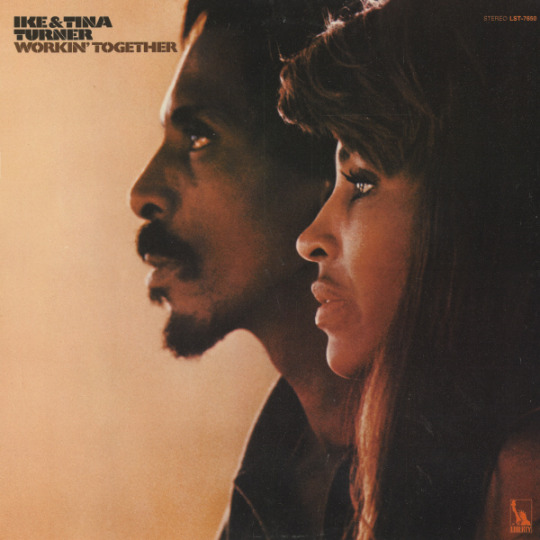
Workin' Together
Ike & Tina Turner
1970, Liberty
“Kenneth Anger and Tina Turner died on the same day,” my friend Jay broke the news to me yesterday afternoon. “And people say God isn’t homophobic.” (A bit later he added, “Apparently Martin Amis also died. So maybe God is bi,” which would explain His persecution complex, anyway.) Turner had been mythologized, homogenized, and eulogized a thousand times over well before her actual death at 83, and while a skim of her Wikipedia page suggests she’d been up to plenty over the past ten years (a weird Christian music foundation; a Broadway musical using her songbook; a hit on the UK charts featuring something called a 'Kygo'), unless she publicly forgave Ike or became Q-pilled, nothing was likely to change her legacy much.
Beyond the ‘80s pop megahits, that legacy rests on a period of her career (the ‘60s and ‘70s) that’s not adequately attested to by her LPs. Although the Ike & Tina machine churned out plenty of spectacular singles and b-sides (“River Deep – Mountain High,” “The Hunter,” “Nutbush City Limits,” “Contact High” etc.), they never delivered a wall-to-wall classic album. Their true power was as by all accounts the world’s greatest live rhythm & blues revue, driven by Ike’s stern leadership and Tina’s bottomless reserves of energy and mostly bottomless dresses.
Workin’ Together is generally considered their best studio effort, and it’s clear the goal was to capture as much of that live energy as they could. Like most of their albums, it mixes contemporary rock covers (Beatles, CCR), some new Ike originals (like the title track), and rinsed and reused re-takes on their early singles (“The Way You Love Me”; “Goodbye, So Long”). On Side Two in particular they deploy a lot of the tricks they used on stage: after rasping and strutting through the minor classic “Funkier Than a Mosquita’s Tweeter,” they milk a dramatic piano solo into (of all things) R&B chestnut “Ooh Poo Pah Doo.” A spoken intro by Tina follows while Ike croons lightly in the background, promising a ‘nice and rough’ rip through “Proud Mary”—and this is precisely what we get, on the album’s clear standout (and biggest hit). After a breath we’re into Ike’s “Goodbye, So Long” (another dance number they’d been playing since the mid-‘60s), followed by a vampy take on “Let It Be” that I’d happily take over the original.
Workin’ Together highlights Ike’s best and worst (musical) qualities. He was one of the great bandleaders in all of music for over 25 years, and he helped create Tina’s iconic style. He also embraced Black music’s movement toward funkier styles, styles he’d played a role in inventing. But he was also aggravatingly conservative, and his domineering management of Tina prevented her from flourishing as a recording artist to the degree peers like Aretha Franklin, Nina Simone, and Roberta Flack achieved. In another timeline, with the chance to work more closely with the great producers of the day, this might not be the best studio album she ever cut. But, despite plenty of great chart successes to come, she never bettered it.
41/365
youtube
#tina turner#ike turner#ike & tina turner#proud mary#workin' together#r&b#funk#rip tina turner#music review#vinyl record#kenneth anger#'70s music
1 note
·
View note
Photo
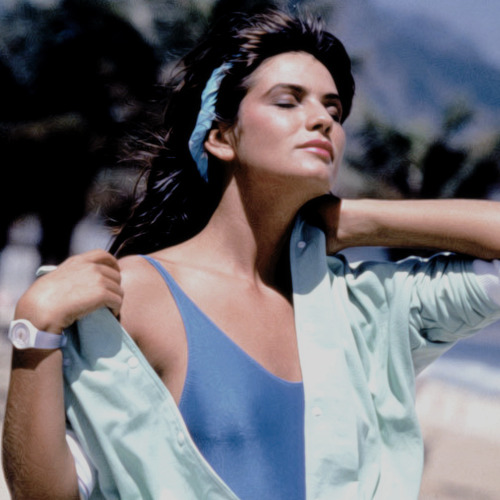
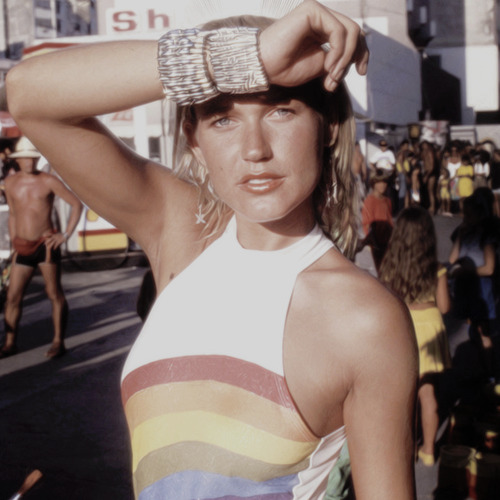




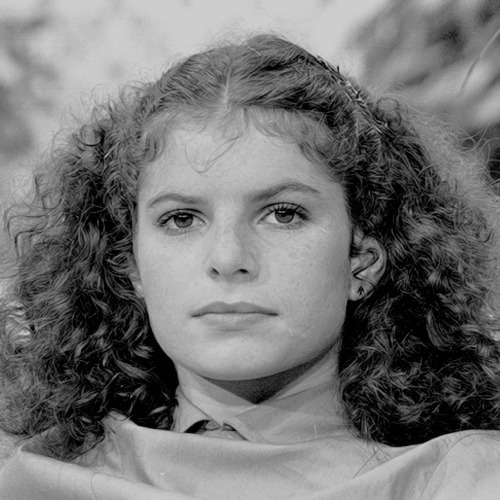


like or reblog.
#luiza brunet#luiza brunet icon#xuxa#xuxa icon#gloria pires#gloria pires icon#malu mader#malu mader icon#ana paula arosio#ana paula arosio icon#roberta close#roberta close icon#debora bloch#debora bloch icon#luma de oliveira icon#luma de oliveira#gisele bundchen#gisele bundchen icon#hj to inspirada em t80s#lutei muito pra fazer esses pqp#80s#80s icon#80s icons#brazil#brazil icon#o brazil ta matando o brasil#brasil#brasil icon#brasil icons#brazil icons
175 notes
·
View notes
Photo

Roberta Close
121 notes
·
View notes
Text
The Most Important Review of Every Single Luca Marinelli Film
Listen, I’m not here to tell you if a movie’s plot is well-structured or whatever, ok? I’m here for objective, factual data on how Luca Marinelli’s brand is adhered to in every movie he’s been in so far.
(all gifs by @weardes)
La solitudine dei numeri primi (2010)

Does Luca smoke? No.
Does Luca sing? No.
Does Luca eat? No.
Does Luca get slapped? No. His life is hard enough as it is.
Is Luca naked? He’s wearing speedos in one scene, but he’s covered in s*lf-h*rm marks, it’s very sad and not sexy at all.
Is Luca gay? Hell if I know.
Is Luca a slut? He talks to like two people in the whole movie.
Lucameter: 2/100 pathetic (but like I get it it’s his first movie w/e)
L'ultimo terrestre (2011)
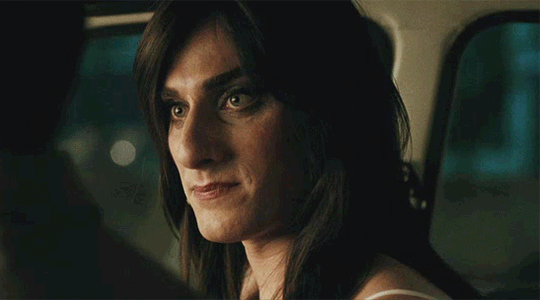
Does Luca smoke? Yes.
Does Luca sing? No, but Roberta is a captivating dancer.
Does Luca eat? No, though she takes a shot once.
Does Luca get slapped? Yes, but not in a fun way :(
Is Luca naked? No, but there are some thighs and belly with a mini skirt in between. No complaints.
Is Luca gay? Not enough data.
Is Luca a slut? No.
Lucameter: 1/100 horrible, Roberta deserved better
Waves (2011)
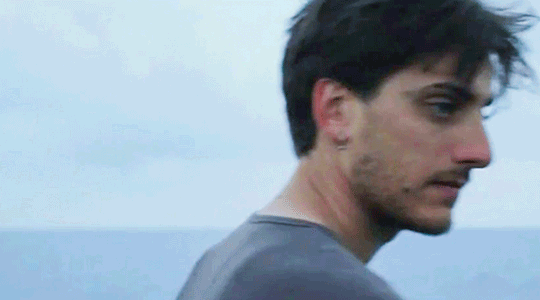
Does Luca smoke? No.
Does Luca sing? Yes, drunkenly!
Does Luca eat? They just won’t let him put food into his mouth! Watching Gabriele trying and failing to eat is Hitchcock-level suspense, though it all comes to a very satisfying conclusion when the camera isn’t focusing on him for a second, and he friggin’ inhales the food off the table.
Does Luca get slapped? No, but he gets pushed around a lot.
Is Luca naked? No, but he does take off his shirt a couple of times. Also his legs are like completely hairless?? Has anyone ever noticed that? They shaved his legs!
Is Luca gay? No proof that he is, no proof that he isn’t.
Is Luca a slut? No, he is the sweetest purest cinnamon roll.
Lucameter: 37/100 it’s getting better
Nina (2011)
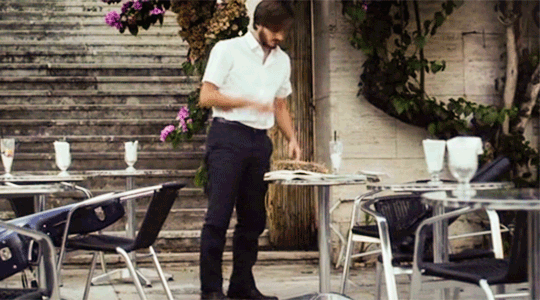
Does Luca smoke? No.
Does Luca sing? No, but he plays the cello and dances.
Does Luca eat? No.
Does Luca get slapped? No.
Is Luca naked? No, though even if he was, you wouldn’t be able to enjoy it because he never gets any close-ups or decent lighting.
Is Luca gay? He’s shown to be into ladies.
Is Luca a slut? Please, he’s barely even a character.
Lucameter: 0/100 unwatchable
Tutti i santi giorni (2012)
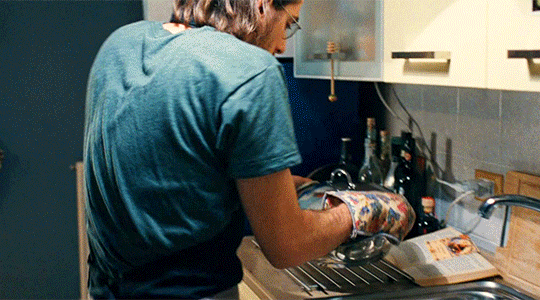
Does Luca smoke? No.
Does Luca sing? No.
Does Luca eat? Yes, and he cooks!
Does Luca get slapped? Yes, lightly, in a patronizing way.
Is Luca naked? Oh yes.
Is Luca gay? He’s religiously devoted to his lady love.
Is Luca a slut? Not so much a slut as a hella thirsty bitch.
Lucameter: 43/100 half down ponytail saves lives
Maria di Nazaret (2012)
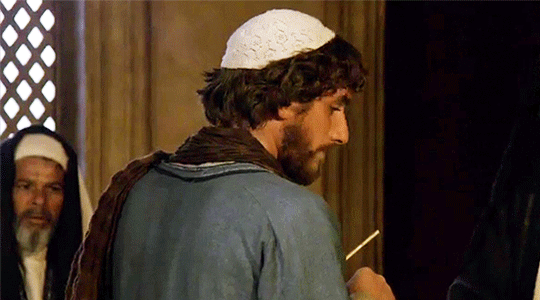
Does Luca smoke? No, obviously.
Does Luca sing? No. He dances once - very clumsily.
Does Luca eat? No.
Does Luca get slapped? No, though he almost drops a house on himself.
Is Luca naked? Guys, it’s a Bible movie.
Is Luca gay? Come on, he’s Saint Joseph.
Is Luca a slut? Lol no.
Lucameter: -10/100 just for that hair
La grande bellezza (2013)
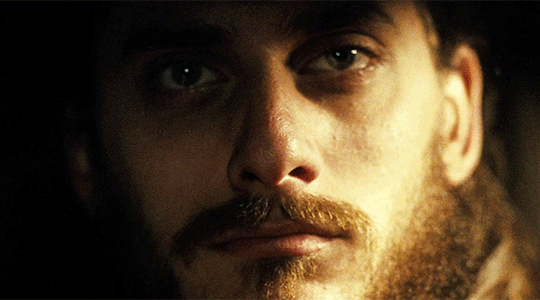
Does Luca smoke? No.
Does Luca sing? No.
Does Luca eat? No.
Does Luca get slapped? No.
Is Luca naked? Full frontal, but in a disturbing way. Red body paint is involved.
Is Luca gay? Who’s to say?
Is Luca a slut? Please.
Lucameter: 4/100 which is more than the number of his on-screen minutes
Il mondo fino in fondo (2013)

Does Luca smoke? No.
Does Luca sing? No.
Does Luca eat? Briefly; he mostly drinks.
Does Luca get slapped? No, but he gets a fruit thrown at him.
Is Luca naked? He’s never more naked than a T-shirt and underwear, but those fuzzy thighs strike back hard after Waves.
Is Luca gay? He’s married to a woman.
Is Luca a slut? I mean, he’s married but goes to a strip club anyway.
Lucameter: 12/100 though he looks really hot in this movie
Non essere cattivo (2015)

Does Luca smoke? Yes, a lot, and he does lots of harder stuff.
Does Luca sing? No, but boy does he dance.
Does Luca eat? He briefly chews on something, but he mostly drinks.
Does Luca get slapped? Yes, wonderfully, multiple times, so good.
Is Luca naked? Fully clothed the entire time.
Is Luca gay? He emanates just the most Gay Longing™
Is Luca a slut? Not actually in practice, but the vibe is there.
Lucameter: 86/100 would have been more if he’d had any nude scenes, but that butt in those jeans is very much appreciated
Lo chiamavano Jeeg Robot (2015)

Does Luca smoke? No, he takes care of his body!
Does Luca sing? Only in the best karaoke scene ever committed to screen. And a little in the car with his buddies. It’s wholesome.
Does Luca eat? He gets a whole ball of mozzarella shoved into his mouth. Luca Marinelli... is lactose intolerant.
Does Luca get slapped? No, but he gets sexy scratches on his face, so points for originality.
Is Luca naked? He’s got all the buttons of his shirt undone in one scene, and there’s also like a quarter of the butt.
Is Luca gay? He’s definitely not straight.
Is Luca a slut? He’s a slut for YouTube views and empowering female songs.
Lucameter: 97/100 I was missing The Slap but whatcha gonna do
Die Pfeiler der Macht (2016)
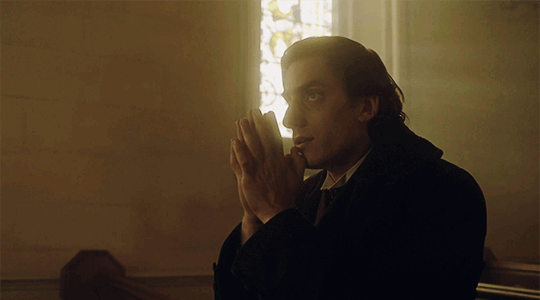
Does Luca smoke? No.
Does Luca sing? No, but he dances sluttily.
Does Luca eat? Yes, though all the food in this movie looks disgusting.
Does Luca get slapped? Very hard.
Is Luca naked? Not as naked as he should be considering the everything about him.
Is Luca gay? He fucks everything in this movie.
Is Luca a slut? He fucks everything in this movie.
Lucameter: 64/100 weak
Slam - Tutto per una ragazza (2016)
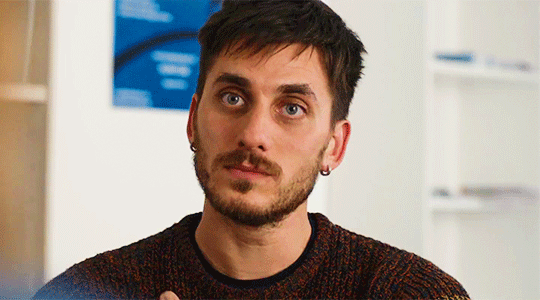
Does Luca smoke? Yes.
Does Luca sing? No.
Does Luca eat? No.
Does Luca get slapped? No.
Is Luca naked? He gives us a full butt moment.
Is Luca gay? Not in the slightest.
Is Luca a slut? Definitely, but it all happens off screen somewhere.
Lucameter: 34/100 the butt is doing all the work here
Il padre d'Italia (2017)

Does Luca smoke? Yes, a lot.
Does Luca sing? Yes, and he dances while singing!
Does Luca eat? No, but he drinks champagne like a fancy bitch.
Does Luca get slapped? Yes, by life.
Is Luca naked? We get everything in the first five minutes. Everything.
Is Luca gay? Yes, canonically and explicitly.
Is Luca a slut? No, he’s full of gay sin and self-loathing.
Lucameter: 99/100 glorious
Lasciati andare (2017)

Does Luca smoke? No.
Does Luca sing? No.
Does Luca eat? No.
Does Luca get slapped? He doesn’t have time for anything else but he always has time to get slapped.
Is Luca naked? Not in the slightest.
Is Luca gay? He just wants to be loved T__T
Is Luca a slut? The virgin vibes are stronger than in the Bible movie.
Lucameter: 8/100 it didn’t have to be this way
Una questione privata (2017)

Does Luca smoke? This movie is covered in smoke from Milton’s cigarettes. Seriously, he smokes all the time. Including the scene where he gets called ugly.
Does Luca sing? No, not even in the scene where he gets called ugly.
Does Luca eat? He drinks an egg, though not in the scene where he gets called ugly.
Does Luca get slapped? No. He gets called ugly, though.
Is Luca naked? No.
Is Luca gay? Strong bisexual vibes from this one.
Is Luca a slut? Again, major virgin energy.
Lucameter: 17/100 can you imagine they had the audacity to call him ugly???
Fabrizio De André - Principe libero (2018)
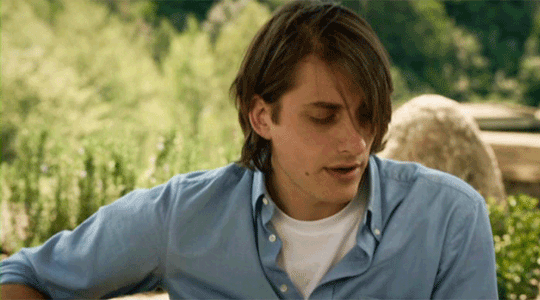
Does Luca smoke? In every scene. Every. Single. One.
Does Luca sing? Duh, while playing the guitar.
Does Luca eat? Yes.
Does Luca get slapped? No, everybody is soft for Fabrizio.
Is Luca naked? He’s wearing nothing but a bath towel for a whole scene.
Is Luca gay? He’s very much into ladies, although he’s got sizzling chemistry with every male character.
Is Luca a slut? He’s very into ladies.
Lucameter: 94/100 almost perfect
Trust (2018)

(it’s not a movie, but Primo is so iconic I can’t and shan’t leave him out)
Does Luca smoke? It’s the 70s and Italy, come on.
Does Luca sing? Unfortunately, he doesn’t, but he’s one hell of a dancer.
Does Luca eat? Munches on spaghetti like there’s no tomorrow.
Does Luca get slapped? Yes. And he doesn’t forget it.
Is Luca naked? Sadly no, but man does the camera love his butt hugged tightly by those slutty 1970s pants. Also balls. Just... just balls.
Is Luca gay? We don’t know for sure, but his whole vibe is kinda the exact opposite of heterosexuality.
Is Luca a slut? For money and power.
Lucameter: 82/100 would benefit from like a karaoke scene or something
Ricordi? (2018)
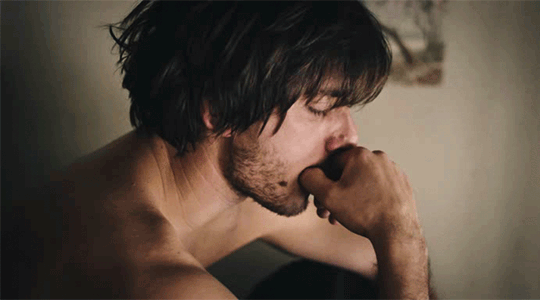
Does Luca smoke? No.
Does Luca sing? No.
Does Luca eat? Yes.
Does Luca get slapped? No.
Is Luca naked? Oh yes. And he fuuuuuuuuuuucks.
Is Luca gay? This relationship is so heterosexual the couple are literally called Him and Her.
Is Luca a slut? He fucks a lot, but somehow in a very unslutty way. He’s mostly just sad.
Lucameter: 51/100 and he’s called ugly again???
Martin Eden (2019)
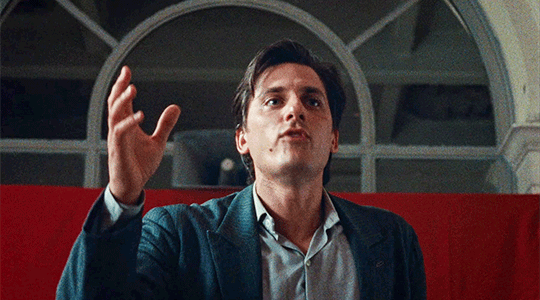
Does Luca smoke? Yes.
Does Luca sing? Amazingly, yes, very softly. He also dances.
Does Luca eat? Yep.
Does Luca get slapped? Finally the slappee has become the slapper.
Is Luca naked? Man, I wish. He doesn’t even take his shirt off like wtf dude what did you build all that bigness for???
Is Luca gay? No, and I think he’d be happier if he were.
Is Luca a slut? No, and again, I think it’d have served him better to be a slut.
Lucameter: 62/100 it’s a fine movie that would’ve benefited from more trademark Luca stuff okay
The Old Guard (2020)
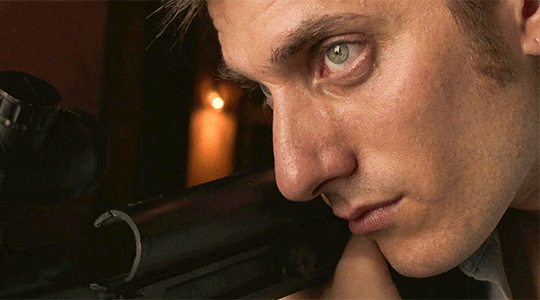
Does Luca smoke? No.
Does Luca sing? No.
Does Luca eat? Briefly.
Does Luca get slapped? A lot of violence happens in this movie, but not a single slap, ridiculous.
Is Luca naked? Shirtless, with a close-up on the nipple.
Is Luca gay? Oh, I don’t know, does being one half of the most wholesome and perfect gay couple count?
Is Luca a slut? How dare you. He’s been happily married for 900 years.
Lucameter: 25/100 none of Luca’s trademarks are present but the epicness of his immortal marriage warms me when I shiver in cold
#luca marinelli#the old guard#martin eden#ricordi?#trust fx#fabrizio de andré - principe libero#una questione privata#lasciati andare#il padre d'italia#slam - tutto per una ragazza#die pfeiler der macht#lo chiamavano jeeg robot#non essere cattivo#il mondo fino in fondo#la grande bellezza#maria di nazaret#tutti i santi giorni#nina#waves#l'ultimo terrestre#la solitudine dei numeri primi
2K notes
·
View notes
Text
SO YALL SAW MY MAN MADE DINOSAUR POST DID YA!?!?! WELL LETS TALK REAL DINOSAURS NOW!!! BTW TALK TO ME ABOUT DINOSAURS AND STUFF
Jurassic park, walking with dinosaurs, national geographic, Disney's dinosaur, land before time and rather old dinosaur books got me into loving these long gone bird bois and girls as well as their reptile flying and swimming friends.
Even now when I see the brachiosaurus scene and hear that music welling up I get the shakes and get tears in my eyes!

Then there's good old Roberta the tyrannosaurus. Ya her name was roberta not Rexy. However you could call her both that always works. A stunning icon for the species.

Then we come to jurassic park 3 the infamous child of the series. Loved this film despite its issues. What made me love it was its monster dinosaur, the spinosaurus

I wanna jump now to fallen kingdom my least favorite of the jurassic park story. The reason was...well the dock scene. I don't wanna elaborate you know what I speak of...*crying*. However thats not what I wanna talk about. When our human clone Maisie released the dinosaurs from a terrible fate I internally cheered. If the dinosaurs HAVE to go extinct again let them go under the stars or the sun. Not in a gas filled chamber. She did the right thing.

When I watch walking with dinosaurs I still cry like a baby at episode 4 and 6. This documentary series didn't pull any punches and it was the first time I cried towards any form of media

National geographic always has awsome dinosaur art I would just marvel at. Even paleoart in general. The amount of work and time making them is amazing and I wish I saved those pages and framed them. I gotta find the artists

Despite Disney's dinosaur having issues like all forms of historical media it was still a overall good story. The carnotaurs introduced me to the bull and I love the design. Hell I even have a figure of it in my bedroom besides PJ'S king Kongs vestatasaurus Rex

Need I say anything about land before time? Actually there is one. Sara was always an arse and I never liked her. Petrey, Ducky, and Spike were always my favorites. Spike probably made be a Foodie. Thanks alot you loveable dumb stegosaurus

I don't remember the book series but they came in three HUGE binders of books. I think it was the entire series all showing 1980s style of dinosaurs and so on. Crap I gotta remember what they were.

And then there's deadsounds magnum opus. Dinosauria. A *to my knowledge* 5 episode series of dinosaur stories he himself has animated and created by himself. So far two episodes have been shown and both are heart wrenching and beautiful examples of paleomedia. And darn it why can't I have more images!?!?

And truth be told I can't truly pick favorites. I love them all and I'm so hecking sad their extinct. (I am aware birds are dinosaurs bur you know what I mean). They didn't die of by changes in environment that was naturally made by the planet. They didn't change into new things because of the planet. They died because a hunk of space rock from nowhere came crashing in a screwed everything up. Nature didn't select them to die MALCOLM space was just an asshole and stuff happened.
If I could I'd defiantly do what Hammond did and bring them back in some kind of form. I understand the impacts on nature it'll do, what it could do to the dinosaurs, and humans in general. However with enough time, multiple voices, many form of expertise from many groups of people, and cooperation it can be done. We can bring back extinct species. Perhaps not perfectly like they were but close enough to where they can survive in this world and we can deal with new neighbour's. It can be done.
I would love to see another spin off of jurassic park where we see the lives of animal handlers and caretakers in the various parks. So the scene I would love to see most of is where a cartaker is calling to a triceratops by name and in a rampant calling/screaming said triceratops comes charging towards their handler not in violence but "OH MY GOD MOM!!! YOUR BACK!!!" Kinda like how you'd see handlers interact with large animals they cared for deeply. Or something similar to that. Jurassic park and it's story dosnr always have to be "AAHHH DINOSAURS ARE MONSTERS AND ATE MY HANDS". I would love to see more wholesome moments. More animal moments if you will.
What really sucks abour dinosaurs is that we will never know the full category. Ever. This was explained by kurzgesagt that there's an unkown unkown zone in biological history. This was caused by scavengers, natural events, acidic earth in jungles and so on. So there could have been some really crazy animals out there that we will never again see or know about. Hell perhaps even dragons or something that can be called a dragon could have existed.
youtube
Honestly I love them all. Even those that arnt dinosaurs by definition such as aquatic and air based reptiles. I love them all and I'm so sad their gone, mocked, and everything else that's negative. Hell eveey extinct animal I'm sad about. All of them. Even the giant sea scorpions and so on.
Also youtube, why are there so many dumb children's toy dinosaur videos. What the heck how do I fix this shit?
#wholesome#dinosaurs#i love dinosaurs#writing stuff#writing#stuff#talk to me#talking#i love animals#jurassic park#walking with dinosaurs#disneys dinosaur#national geographic#Roberta#land before time#spinosaurus#brachiosaurus#Youtube
41 notes
·
View notes
Text
Points of view – The Interview: Luca Marinelli

How do you approach your characters.
Sometimes I also wonder how I get to the character. For “Non essere cattivo”, I had a very detailed script and a fascinating director at my disposal, so I didn't struggle to relate. It was a very brave script for the way it dealt with reality. At first my auditions went in the direction of Vittorio's character but also knowing the figure of Cesare, more than once I thought I would like to play him. I saw the auditions of others and I stopped to think how I could have done Cesare. Then at a certain point I remember that Claudio looked at Valerio and told him that it would be better to reverse the roles, to let me try Cesare, and so it went. When I read the script of “Lo chiamavano Jeeg Robot”, the first thing that struck me, besides the courageous imagination, was to understand how a film of this kind could be made.
In the first part of your career, you brought an image of introverted and staid youth to the screen. Was this a choice.
Absolutely not. Or rather yes, it was the choice of those who met me first. Perhaps a part of my personality has been seen that could best marry the characters in question. It happened both in “La solitudine dei numeri primi” by Saverio Costanzo and later with Virzì in "Tutti i santi giorni", then it can be said that with Casare of “Non essere cattivo” and the Zingaro of “Lo chiamavano Jeeg Robot” I was allowed to turn things around slightly, to play a character who had a disposition and behavior that was completely the opposite of what I had faced previously.
What do you remember about your debut with Saverio Costanzo.
He was my initiation into cinema, I came from the Academy and I had no idea what it was like to work on a set. The best memory, in addition to the experience of the film with him and Alba, is the first meeting, the first audition, where I really understood that I strongly wanted to work with him and that if this had happened I would have ended up in the hands of a great author.
With that film you found yourself in the main competition of the Venice Film Festival. What memories do you have of that first time at the lido.
Of a huge confusion and a big headache. We were tossed around from one interview to another and not only that, because the worst thing was always answering the same questions, and I was terribly worried not to make the situation even more boring for the machine operator, who never changed, and I don't think could take it longer to hear the same phrases over and over. Fortunately, Alba was there as well and saved me in more than one interview. The experience helped me because the following times I knew slightly more what I was going through and how to manage situations and keep stress at bay. Or maybe not yet, it's a long way.
I noticed that when you talk about your job you do it using the verb “to play” (giocare). Is it a coincidence or the choice has a precise meaning.
Perhaps it’s not a coincidence that in English the term recite is said precisely in this way because in my opinion to play, or the French jouez, represents the feeling of freedom and fun that is inherent in the job I do, better. As far as I'm concerned, the moment of the take is when the actor has to stop thinking, abandon worries, to be able to bring out the energy of his character. He has to play with the same seriousness and commitment with which a child does. I remember a piece of advice from Carlo Cecchi on the fact that in acting counts listening and the here and now. Being actively present to oneself and to others at that exact moment.
You have a method for achieving this condition.
If someone asked me something about technique, I wouldn't know what to answer, apart from listening. On the set of Andrea Molaioli's film in which I am the father of the young protagonist, the actor who plays him, Ludovico, who is really good, full of talent and very smart, once asked me what was the technique to make the best of the character, and the only thing I felt able to advise him was to try to be present in that moment and then to let go, listen and not think about the rest.
But I imagine that there are also practical aspects in the preparation that precedes the start of filming.
As for me, I try to prepare as much as I can before arriving on set because at the start of the shoot it would be good to be ready. But not everything happens automatically, in the sense that you can’t always find the character immediately. However, I have always been lucky enough to have more or less long periods of rehearsal before starting a film. I remember this moment with Saverio and Alba, where we spent weeks among us and also with the kids who would have played us as children, to try the various scenes and to create a union and harmony between the characters. The same happened with Paolo Virzì, Thony and I, more than once we gather, facing the script, to clarify all the passages and moments of the scenes.
And how did things go with Claudio Caligari.
The same thing also happened with Claudio even though the illness made everything more complicated for him. He asked us to change our bodies, to participate in the auditions of the other actors. This allowed all of us, the cast, to integrate and develop a unity of purpose and a truly rare familiarity. So in front of the camera it seemed to me that the gang, to which Cesare and Vittorio belonged, was really part of my life, that it wasn’t hard to pass from Luca to Cesare, because I had found him. And always to identify with the environment of the story, I preferred a house in Ostia, and Alessandro often came to me from Rome to spend time between the two of us. Claudio, in addition to having reading meetings together, also showed us films that were a source of inspiration for him for this film, such as “Accattone” by Pier Paolo Pasolini, “Rocco e i suoi fratelli” by Luchino Visconti and “Mean Sreet” by Martin Scorsese.
Instead, I wanted to ask you what happens between takes, for example when you come home after a day of work. You stay inside the character as it happens to Daniel Day Lewis, or you put it aside and think of something else like Marcello Mastroianni did.
I try to disconnect from the set. I try. I go home and try to do something else, but the last thought before falling asleep always goes to the next day's work plan and I leave myself a few minutes for the memory and concentration useful for tomorrow and then I close my eyes.
We asked Roberta Mattei and we ask you too. During the processing you were aware of the exceptional nature of what you were doing.
Yes. Let me explain: I saw with my own eyes that what was happening was exceptional, a man who was dying wanted to give his latest work to the public, to his audience, to his people, to people. This has no equal for me. Don't think about yourself in such a situation but about others.
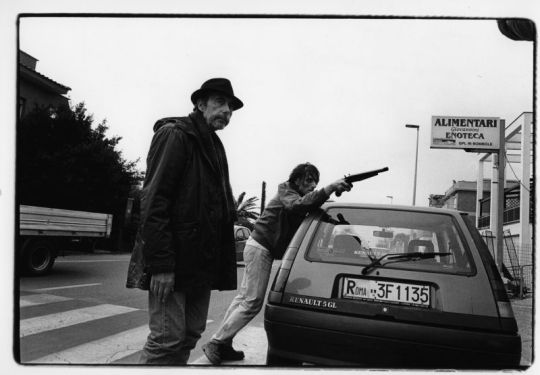
Then it was the turn of Lo chiamavano Jeeg Robot.
I shot Jeeg Robot in March 2014, and therefore before “Non essere cattivo”. The fact that Mainetti's film is only coming out now is due to the long post-production period necessary to assemble the shot with the special effects present in the film.
Here as well it was an interpretation and a character who completely overturns the transparent and pristine image of the first part of your career.
To make Jeeg Robot we had to convince each other, Gabriele Mainetti and I, about my success in the character. I pushed him towards a theatricality and Gabriele towards a real madness, a pure pain. In the end, I think we have found the right amount.
The construction of the Zingaro was already very clear in the writing and it was up to us, however, to find its true aspect.
Guiding him is this crazy and boundless ego, and the obsession with having to leave a mark. The Zingaro's eccentricity is partly reflected in his look, halfway between a rock star and a suburban bully. For the costumes and make-up we were inspired by the great rock icons. We dared in some choices, such as the black coat with pink leopard lining that characterize the wardrobe. For the aspects related to the way of performing, his model was Anna Oxa and in particular the video of her at Sanremo, when she sings “Un’emozione da poco”.
In part you have already answered, but I wanted to know how you choose to accept the proposals that are made to you and if you have any foreclosures towards television, or more generally towards commercial cinema.
I choose the proposals on the basis of love at first sight that must happen with the film, with its screenplay. Then figure out who will be leading the film, meet the director. I don't have any kind of foreclosure, let's say that if I don't like something I don't do it and if I like it I do. And it doesn't matter if it's cinema or television.
As a spectator what is the cinema you love.
I like films that have something to say and that I also choose based on who directed and starred in it. Usually when they ask me to name some titles I have a void. Think that the same thing happened to me also during the audition to enter the experimental center, when Lina Wertmuller asked me the title of a film I had seen recently. I was struck by a cosmic void and instead of naming her an authoritative and important film I left her stunned by citing Batman, I think Nolan's first, still a good film, but I still had Wertmuller in front of me... But to go back to what you asked me, I tell you that in general I always like to watch films that come from Sundance, of which I remember, for example “Like Crazy”, which I found disarmingly beautiful, the films of P.T. Anderson, Wes Anderson, the Cohen, there are many, and among the Italians those played by Alba Rohrwacher, Valerio Mastandrea, Elio Germano, Kim Rossi Stuart and directed by Alice Rohrwacher, Costanzo, Virzì, Sorrentino, Garrone, Salvatores. Without forgetting those of the great Joaquin Phoenix. But in reality I look at everything, let's say that I try not to lose anything of these.
Despite the certificates of esteem you have received for your performances, the impression is that of an understatement that almost seems not to be aware of what you have achieved so far as an actor.
Whenever I see a film of mine I always think there is something I could have done better. But basically I'm happy with what I've done so far. Having said that, I think that the films alone should be enough to explain everything and that the interviews don’t add anything new to what there was to say before making them. But when I am in the dance, when I need to promote, I am committed to doing it in the best possible way. I strongly think that in life and at work it’s important to demonstrate that you know how to do and not to show at all costs that you do.
DREAMINGCINEMA
Just wanted to translate this old interview for the non-italian’s fans ^^ (sorry for my English)
#Luca Marinelli#interview#english translation#mine#english#non essere cattivo#lo chiamavano jeeg robot#slam tutto per una ragazza#la solitudine dei numeri primi#Tutti i santi giorni#actor#cinema#film
73 notes
·
View notes
Text
Tip Top Tap: Great Tap Performances in Film By Constance Cherise
In my opinion, there is no conversation surrounding classic musical tap dancing in film without including the likes of the Nicholas Brothers, Fred Astaire or Gene Kelly. Over the years, there have been countless memorable dance scenes, and in compiling a list of the routines I felt were exceptional, I wanted to search further than my initial go-to's. Here, in no certain order are my not so obvious choices of remarkable classic musical tap-dancing performances.
The Nicholas Brothers: “Jumpin’ Jive” – STORMY WEATHER (‘43)

They are the incomparable Nicholas Brothers. Their bodies act like boneless structures, they leap through the air defying gravity and land in splits, consecutively. Just when you think the dance cannot get any better, they move to the next set, where the finale is literally and figuratively unbelievable. This is why Fred Astaire called this performance, “The best ever put on film.” If this is your first time seeing this sequence, I can assure you it will leave you shaking your head in pure amazement. Baryshnikov, Balanchine, Astaire and Kelly, were humble fans of the Nicholas Brothers, and all were in awe of their capabilities. Not only is this performance astonishing, according to the brothers, it was unrehearsed and executed in one take.
Judy Garland and Gene Kelly: “Barn Dance” – SUMMER STOCK (‘50)

Gene Kelly and Judy Garland...pure chemistry. This is not Kelly and Garland’s first dance number together. In fact, during their MGM career, they co-starred in THE PIRATE (’48) and FOR ME AND MY GAL (’42). Kelly is his normal effervescent self, performing his discipline in grounded masculinity. Garland, who did not arrive at MGM as a professionally trained tap dancer, matches Kelly move for move until Kelly performs his signature airplane twirl. Although Garland is the healthiest we've seen her in years at the point of this picture—as she recently completed a stent in a detoxification facility (note the measurable difference in her weight by the end of the film in the musical number “Get Happy”)—she remains as light as a feather. “Barn Dance” is a joyful, exuberant number and is reflective in the expression on their faces. SUMMER STOCK would be Garland's last film with MGM. It’s a fitting circumstance that Kelly would become Garland's final partner, as eight years earlier, Garland welcomed and mentored Kelly in his first film, FOR ME AND MY GAL, a facet of their friendship he would always remember.
Gene Kelly: “I Like Myself” – IT’S ALWAYS FAIR WEATHER (‘55)

As if his SINGIN’ IN THE RAIN (‘52) icon status, Hollywood good looks, voice and choreography skills weren't enough, Gene Kelly performs in a pair of roller skates in IT'S ALWAYS FAIR WEATHER (‘55) and once again proves his genius. But, he doesn’t just roller skate. He performs with the precision and grace of a professional ice skater. No stunt doubles here, this is all Kelly (he did the majority of his own stunts). His performance is flawlessly intricate, and for Kelly, it seems as natural as walking. When he breaks into tap dancing, performing time steps and heel clicks, you start to wonder what can't he do? Twenty-five years later and with just as much stability, he would once again don a pair of skates while performing in the cult classic fantasy film XANADU (‘80).
Fred Astaire and Gene Kelly: “The Babbitt and the Bromide” – ZIEGFELD FOLLIES (‘45)

This is the first time Kelly and Astaire dance together on film (they would not dance together again until THAT'S ENTERTAINMENT, PART II, [‘76]). It is a clever vaudevillian-style number, allowing exactly enough time to showcase each performer's attributes, amusingly injecting instigation, to highlight their professional rivalry, concluding in an energetic finale. It is an excellent visual example of distinguishing their unique technique. Each is certainly at their best given their status and subsequent comparison. However, those who are true classic musical fans understand Kelly and Astaire cannot be compared. Although their dance styles are different, they are also equally extraordinary. Kelly's athleticism in juxtaposition to Astaire’s delicacy is perfectly matched.
Fred Astaire and Ginger Rogers: “I’ll Be Hard to Handle” – ROBERTA (‘35)

The pairing of Astaire and Rogers was destiny. This particular number was performed live: live music, live tap dancing, with no cuts and done in one take. If you listen closely, you can even hear Rogers’ giggle. It seems as if they casually blend into the dance, but of course we know this is not the case. At times, their movements are deliberately delayed and at others, they are kinetic. Midway, the two have an argumentative exchange exclusively through tap dancing. Rogers echoes Astaire tap for tap and their symbiosis is apparent. It is a lighthearted and carefree number, and as with all Rogers and Astaire performances, absolutely delightful.
Bill “Bojangles” Robinson: Stair Dance

Best known for his successful pairings with Shirley Temple, of which both were sincerely fond of each other, here he performs his famous stair dance. Bill “Bojangles” Robinson honed his craft from childhood, which eventually led him to become one of the first African American’s to appear in vaudeville without blackface and as a solo performer. Here, he uses his hands and his feet before climbing the steps, as if testing them to see if they are worthy enough to withstand his elegantly polished footwork. He continues to elaborate each pattern in growing confidence. His feet remain low, and at times it seems that he is standing still. Every tap is clean and sharp as each stair resonates with a different note. Robinson's genius is in creating a performance that is technically complex and elaborate, that appears as if it were commonly effortless.
#Tap dancing#old hollywood#classic film#musicals#nicholas brothers#Gene Kelly#Judy Garland#Fred Astaire#Ginger Rogers#Bill Bojangles Robinson#TCM#Turner Classic Movies#Constance Cherise
366 notes
·
View notes
Text
gifs and ships
I was tagged by @pichitinha to describe my ships using gifs!
1. First Ship - Ana / Danilo (Chocolate com Pimenta)
soap operas are a huge thing here in Brazil (the mexican ones were my favorites! they’re a classic around here if you are keen to drama). but the first couple I remember rooting for is from a brazillian one. they had a lot of winning tropes: angst, slow burn (kinda), they had a son and she didn’t tell him.... yep, that’s good lol

2. First OTP - Diego / Roberta (Rebelde)
remember when I told you mexican soap operas were dramatic? well... Rebelde had three seasons (with more than 100 episode... EACH), so you can imagine how much drama and slow burn I had to put up with lol
the soap opera and the band (RBD, if you don’t know) were the first things I can remember being truly a fan. I still love them (the band split up almost 13 years ago and the original airing of rebelde ended back in 2006). roberta and diego are the definition of enemies to lovers (and back to enemies... and then to lovers once again haha). they were pure chaotic energy, I love it! it’s one of my fav ships ever and it’ll always be ♥
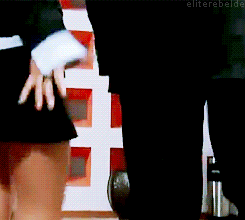
3. Current fav ship - Betty / Jughead (Riverdale)
bughead exes to lovers 2021 let’s goooooo!!! they are truly iconic. imagine not shipping this excellence? cannot relate *inserts shrug emoji here*
(ps: this kiss is one of the hottest things I’ve ever seen... better than a lot of sex scenes we’ve seen in this show hehe)

4. Your Ship Since the First Minute - Alex / Piper (OITNB)
I didn’t even know what lovers to enemies to lovers was but those lesbos gave me everything I didn’t even knew I needed lol (I didn’t even finish oitnb but they always be one of my wlw ships)
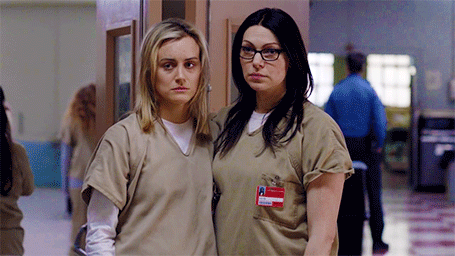
5. You Wish They Had Been Endgame - Simon / Alisha (Misfits)
this one will ALWAYS bring me pain. ugh. so good and so sad! a broody/emo boy + bad girl? yes sign me up.
(also house/cuddy from house m.d)

6. You Wish They Had Been Canon - Draco / Hermione (Harry Potter) AND Rachel / Santana (Glee)
JK had the opportunity to give us one of the most iconic enemies to lovers couples ever and fucked it up so yep...... hp canon story? (keke palmer’s voice) he could be walking down the street, I wouldn’t know a thing.
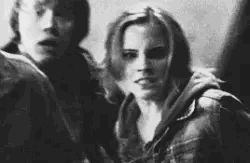
faberry who? please, pezberry had THE enemies to lovers feat. hate fuck energy we deserved to see. no I don’t make the rules and yes you are wrong if you don’t ship them.
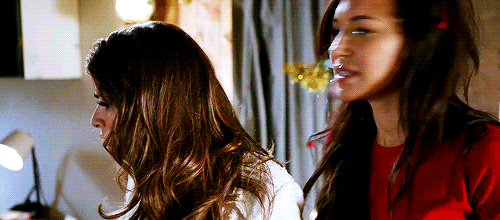
7. Most of the Fandom Hates, but You Love - Finn / Rachel (Glee)
this one is so close to my heart! I didn’t even finish glee because it became a shit show and I couldn’t watch after Cory’s passing, but finn and rachel were IT for me since day 1. ALL of my friends hated finchel on twitter bc they shipped faberry, but here on tumblr, I found so many artists that gave me tons of gifs and fanfics hehe

8. You Don’t Even Watch the Show, but You Ship Them Anyways - Clarke / Lexa (The 100)
yep.

9. You Wish They Had a Different Storyline - Callie / Arizona (Grey’s Anatomy)
the cheating storyline was the beginning of the end for me, they destroyed a PERFECT ship. I still don’t accept that. justice for may babies (they are kinda [?] endgame but the writers did them SO DIRTY!)

10. Fav Ship That is Endgame - Chuck / Blair (Gossip Girl)
iconic shit right here, I don’t even need to explain.

tagging @feisty-aquarius4, @dreamingofbughead, @aresaphrodites, @courtaa, @stonerbughead and whoever wants to participate! (@pichitinha if you want to make a book edition with gifs or maybe fanarts... so I’m tagging you again! haha)
10 notes
·
View notes
Text
Radix Dance Convention, Atlanta, GA: RESULTS
High Scores by Age:
Rookie Solo
1st: MIla Simunic-’Never Enough’
2nd: Brenna Ferrell-’Showstopper’
2nd: Alaina Chadbourne-’Walk The Dinosaur’
Mini Solo
1st: Ellie Melchior-’Function’
2nd: Barrett Robison-’Ping’
3rd: Spencer Parnell-’The Return’
3rd: AnaKate Danner-’Unleashed’
3rd: Paislyn Schroeder-’Vibin’
4th: Kaylee Schwamb-’See Me Now’
4th: Lily Planck-’She’s A Lady’
5th: Georgia Beth Peters-’Come Together’
5th: Ava Grace Merritt-’Love Me’
5th: Anslee LeBlanc-’Take Care Of Yourself’
6th: Bella Smith-’Against The Music’
6th: Clare Gibbons-’Baby I’m A Star’
7th: Xin Lee-’Finding Home’
7th: Avery St John-’Tomorrow’s Song’
8th: Londyn Knox-’Without You’
9th: Lauren Fenton-’Boogie Shoes’
9th: Madelyn Laken-’Surprise’
10th: Penelope Thomas-’Love Shack’
10th: Lila Morath-’Miss Velour’
Junior Solo
1st: Amaya Llewellyn-’Must’
1st: Leila Winker-’Takt’
2nd: Emme James Anderson-’Resume’
3rd: Riley Fiorello-’Crippled Bird’
3rd: Estella Guzman-’No Contamination’
3rd: Ally Reuter-’Stagma’
4th: Mia Doyle-’Designated Harmony’
4th: Brinkley Pittman-’Gravity’
4th: Addison Cullather-’Tangent’
5th: Morgan Belyeu-’Older’
5th: Kalli Ramet-’Rock Me Baby’
5th: Roberta Marcos-’Torn’
6th: Luna Powell-’1977′
6th: Ella Paige Moore-’Breaking Point’
6th: Zella Wentz-’Fearless’
7th: Addison ?-’How Does A Moment Last Forever’
7th: Collier McLain-’Love Has No Limits’
7th: Mia Mondok-’Music Box’
7th: Gabriela Miller-’Sinking’
8th: Mia Narvaez-’Destinations’
8th: Amanda Fenton-’Devil In Disguise’
8th: Annabel Ellis-’The Forest’
8th: Sidney Hill-’The Moon’
9th: Zoe Kappler-’Changeling’
9th: Callie Ludtke-’Impossible’
9th: Leah Midgett-’Mirror Mirror’
10th: Kinley Andrews-’All That Jazz’
10th: Meredith Lee-’Especially A Woman’
Teen Solo
1st: Harlow Ganz-’End of Love’
1st: Preslie Rosamond-’Possibly Maybe’
2nd: Emery Sousley-’Birds of Paradise’
3rd: Olivia Taylor-’Closure’
3rd: Oliver Keane-’Electric Pulse’
4th: Kenzie Robertson-’1977′
4th: Josh Stephens-’Fires’
4th: Johanna Jessen-’Party’
4th: Gabriella Kennedy-’Ritz’
4th: Rianna Weck-’Sensory Overload’
5th: Delaney Lorenz-’Creep’
5th: Haley Midgett-’Smile to Me’
5th: Sydney Tam-’Touch’
6th: Natalie Bumgarner-’Maybe This Time’
6th: Kate Higginbotham-’Polly’
7th: Kennedi Washington-’Epilogue’
7th: Kayla Pierce-’Fire Speak’
7th: Kayla Montgomery-’Lalia’
8th: Cady Cropper-’Godspeed’
8th: Maddie Laine Callaway-’Piece by Piece’
9th: Mia Lott-’Flawless’
9th: Jordan Stevener-’Ghosts’
9th: Ally Organo-’Like You’ll Never See Me Again’
10th: Julia Deana-’Hate You’
10th: Madison marshall-’Icon’
10th: Dempsey Foxson-’Vain’
Senior Solo
1st: Seth Gibson-’Identity’
1st: Dai Boyd-’Try A Little Tenderness’
2nd: Libby Wiley-’By Thy Light’
3rd: Brittany Willard-’Unchained Melody’
4th: Raven Rutledge-’A Pale’
5th: Rebecca Lewyn-’Devil I Know’
5th: Anna Goodman-’Fallen Alien’
5th: Alexandra Jinglov-’Take It Easy’
6th: Belle Mason-’Drones’
6th: Katelynn Midgett-’Georgia’
6th: Ayana Davis-’Progressing’
7th: Kaili Tam-’Malamente’
7th: Elaina Samady-’Loving Ghosts’
7th: Ally Pereira-’Daring to Love’
7th: CJ Parker-’A Letter From France’
7th: Madison Phelps-’A Feeling Felt’
7th: Avery Ferguson-’When You Sleep’
8th: Izzie Bringle-’Hush’
8th: Molly Fisher-’Moved’
8th: Lexi Elias-’The Weight’
9th: Gracie Avalos-’A Body’
9th: Kirsten Brown-’Asylum’
9th: Julia Hale-’Cellophane’
10th: Brooke Manchester-’Go’
10th: Ainsley Wharton-’These hands’
10th: Sophie Hooker-’We’ll Meet Again’
Mini Duo/Trio
1st: Academy for The Performing Arts-’Fall For You’
2nd: Milele Academy-’Miami’
3rd: Studio 413-’Party Planners’
3rd: Milele Academy-’Vibology’
Junior Duo/Trio
1st: Milele Academy-’Fiyah Speak’
1st: Academy for the Performing Arts-’Oceania’
2nd: B-viBe The Dance Movement-’The Mess We’re In’
3rd: Dance Productions Unlimited-’Superpowers’
Teen Duo/Trio
1st: The Royal Dance Academy-’Greiving’
2nd: Milele Academy-’Down We Go’
2nd: Accolades Movement Project-’I Remember Her’
3rd: Studio 413-’Distortion’
3rd: Academy for the Performing Arts-’Fledglings’
3rd: Academy for the Performing Arts-’Rebuild’
3rd: Academy for the Performing Arts-’Tiny Cities’
Senior Duo/Trio
1st: Studio 413-’Black Flies’
2nd: Milele Academy-’Darkest Hour’
3rd: B-viBe The Dance Movement-’Heartbeat’
Rookie Group
1st: Elite Studio-’I Don’t Want to Show Off’
2nd: Elite Studios-’90′s Babies’
Mini Group
1st: Encore Studio-’Uptown Girl’
2nd: Encore Studio-’Windowdipper’
3rd: Encore Studio-’Turn to Stone’
Junior Group
1st: Jill’s Studio of Dance-’All I Want’
1st: B-viBe The Dance Movement-’Down The Line’
1st: B-viBe The Dance Movement-’History In The Making’
2nd: Milele Academy-’Save a Horse’
3rd: Elite Studio-’Collective Breath’
Teen Group
1st: Academy for the Performing Arts-’Don’t Forget Me’
1st: Encore Studio-’Kinjabang’
2nd: Studio 413-’Social Media Overload’
3rd: Milele Academy-’Close Up’
Senior Group
1st: Elite Studios-’I Still Remain’
2nd: Milele Academy-’Get It’
3rd: Academy for the Performing Arts-’Holdin Out’
Rookie Line
1st: Encore Studio-’Conga’
Mini Line
1st: Jill’s Studio of Dance-’Jailhouse Rock’
2nd: Encore Studio-’Truth’
3rd: Elite Studio-’Get Busy’
3rd: Elite Studios-’What You Did To Me’
Junior Line
1st: Milele Academy-’Missy’
2nd: Jill’s Studio of Dance-’It’s About That Walk’
3rd: Studio 413-’Into the Night’
Teen Line
1st: Studio 413-’Hold On Tight’
2nd: Encore Studio-’Yikes’
3rd: Encore Studio-’Just Say’
Senior Line
1st: Studio 413-’Rumors’
2nd: Jill’s Studio of Dance-’Lost’
3rd: Jill’s Studio of Dance-’Who You Are’
Mini Extended Line
1st: Encore Studio-’Vibeology’
2nd: Studio 413-’Critical Level’
3rd: Jill’s Studio of Dance-’I’m Alive’
Junior Extended Line
1st: Jill’s Studio of Dance-’Covergirl’
1st: Jill’s Studio of Dance-’Footloose’
1st: Studio 413-’Goodbye’
2nd: Studio 413-’Girl Boss’
Teen Extended Line
1st: Studio 413-’No One’
2nd: Studio Powers-’BLACK’
3rd: Studio 413-’Ready or Not’
Senior Extended Line
1st: Jill’s Studio of Dance-’Shut It Down’
2nd: Jill’s Studio of Dance-’Trust Me Again’
3rd: Jill’s Studio of Dance-’Resolution’
Junior Production
1st: Studio 413-’Electricity’
Teen Production
1st: Encore Studio-’Cardi’
2nd: Jill’s Studio of Dance-’JLo’
3rd: Elite Studio-’That 70′s Show’
High Scores by Performance Division:
Rookie Jazz
1st: Encore Studio-’Conga’
2nd: Elite Studio-’I Don’t Want to Show Off’
Rookie Tap
Elite Studios-’90′s Babies’
Mini Jazz
1st: Encore Studio-’Uptown Girl’
2nd: Jill’s Studio of Dance-’Jailhouse Rock’
3rd: Milele Academy-’Move Your Body’
Mini Hip-Hop
Studio 413-’Lose Control’
Mini Tap
Studio 413-’Critical Level’
Mini Contemporary
1st: Encore Studio-’Windowdipper’
2nd: Encore Studio-’Turn to Stone’
3rd: Encore Studio-’Truth’
Mini Lyrical
1st: Elite Studios-’Every Single Thing I Have’
2nd: Vermont Ballet Theater-’Build It Up’
Mini Specialty
Jill’s Studio of Dance-’I’m Alive’
Junior Jazz
1st: Jill’s Studio of Dance-’Covergirl’
2nd: Studio 413-’Electricity’
3rd: Milele Academy-’Save a Horse’
3rd: Jill’s Studio of Dance-’It’s About That Walk’
Junior Hip-Hop
1st: Milele Academy-’Missy’
2nd: Studio 413-’Girl Boss’
3rd: Academy for the Performing Arts-’New Skool’
Junior Tap
1st: Studio 413-’Into the Night’
2nd: Academy for the Performing Arts-’You Can Feel It’
Junior Contemporary
1st: Studio 413-’Goodbye’
2nd: B-viBe The Dance Movement-’Down The Line’
3rd: Elite Studio-’Collective Breath’
Junior Lyrical
Jill’s Studio of Dance-’All I Want’
Junior Musical Theatre
1st: Academy for the Performing Arts-’Guns and Ships’
2nd: Vermont Ballet Theater-’We Go Together’
Junior Specialty
1st: Jill’s Studio of Dance-’Footloose’
2nd: B-viBe The Dance Movement-’History In The Making’
Teen Jazz
1st: Encore Studio-’Just Say’
2nd: Studio 413-’Body Language’
3rd: Studio 413-’Social Media Overload’
Teen Hip-Hop
1st: Encore Studio-’Yikes’
2nd: Studio Powers-’BLACK’
3rd: Jill’s Studio of Dance-’Fire Emoji’
Teen Tap
1st: Studio 413-’No One’
2nd: Encore Studio-’Cardi’
Teen Contemporary
1st: Studio 413-’Hold on Tight’
2nd: Encore Studio-’Kinjabang’
2nd: Academy for the Performing Arts-’Don’t Forget Me’
2nd: Encore Studio-’Sadness’
3rd: Milele Academy-’Hurting You���
Teen Lyrical
Vermont Ballet Theater-’Gravity’
Teen Musical Theatre
1st: Elite Studios-’Take Off With Us’
1st: Academy for the Performing Arts-’Wait For Me’
Teen Specialty
1st: B-viBe The Dance Movement-’Cage of Bones’
2nd: Studio Powers-’Area 51′
Senior Jazz
1st: Studio 413-’Rumors’
2nd: Jill’s Studio of Dance-’Shut It Down’
3rd: Elite Studios-’Sleep’
Senior Hip-Hop
Academy for the Performing Arts-’Welcome to Our Hood’
Senior Tap
Academy for the Performing Arts-’Holdin’ Out’
Senior Contemporary
1st: Elite Studios-’I Still Remain’
2nd: Milele Academy-’Get It’
2nd: Jill’s Studio of Dance-’Lost’
3rd: Jill’s Studio of Dance-’Who You Are’
3rd: Jill’s Studio of Dance-’Trust Me Again’
Senior Lyrical
1st: Elite Studios-’Kissing You’
2nd: B-viBe The Dance Movement-’Came Here For Love’
Senior Specialty
1st: Academy for the Performing Arts-’Still Smiling’
2nd: B-viBe The Dance Movement-’For This You Were Born’
Best of Radix:
Rookie
Elite Studio-’I Don’t Want to Show Off’
Encore Studio-’Conga’
Mini
Milele Academy-’Move Your Body’
Jill’s Studio of Dance-’Jailhouse Rock’
Encore Studio-’Uptown Girl’
Junior
Elite Studio-’Collective Breath’
Milele Academy-’Missy’
B-viBe The Dance Movement-’History In The Making’
Studio 413-’Goodbye’
Jill’s Studio of Dance-’Covergirl’
Teen
Academy for the Performing Arts-’Don’t Forget Me’
Studio 413-’Hold On Tight’
Studio Powers-’BLACK’
Milele Academy-’Hurting You’
Jill’s Studio of Dance-’Fire Emoji’
Encore Studio-’Yikes’
Senior
Milele Academy-’Get It’
Elite Studios-’I Still Remain’
Studio 413-’Rumors’
Academy for the Performing Arts-’Holdin Out’
Jill’s Studio of Dance-’Lost’
Studio Standout:
Elite Studios-’I Still Remain’
Academy for the Performing Arts-’Holdin Out’
B-viBe The Dance Movement-’History In The Making’
Encore Studio-’Yikes’
Jill’s Studio of Dance-’Lost’
Milele Academy-’Get It’
Studio 413-’Hold On Tight’
8 notes
·
View notes
Photo
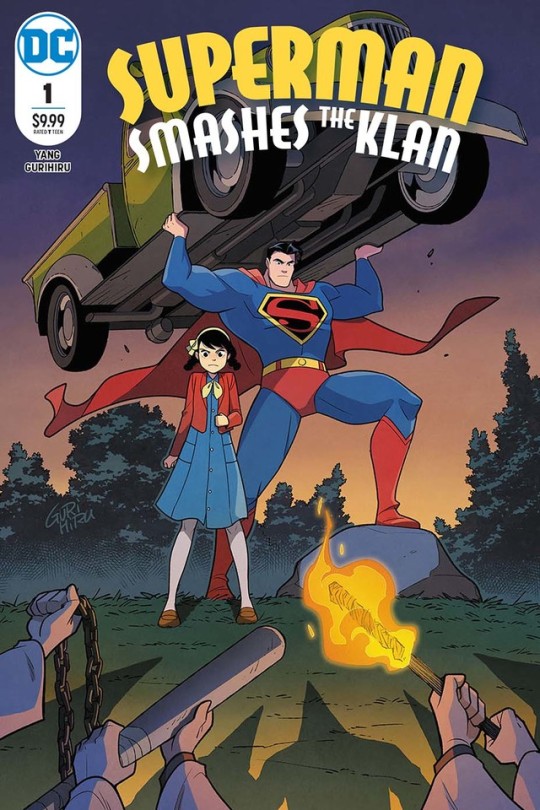
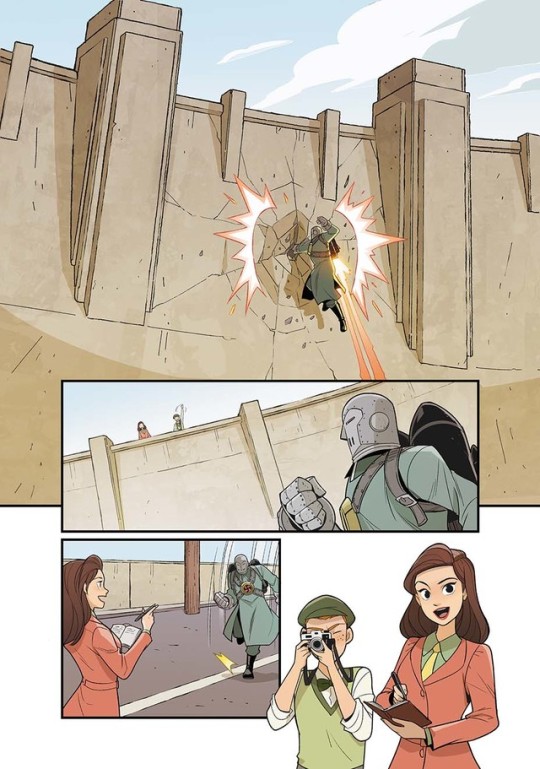

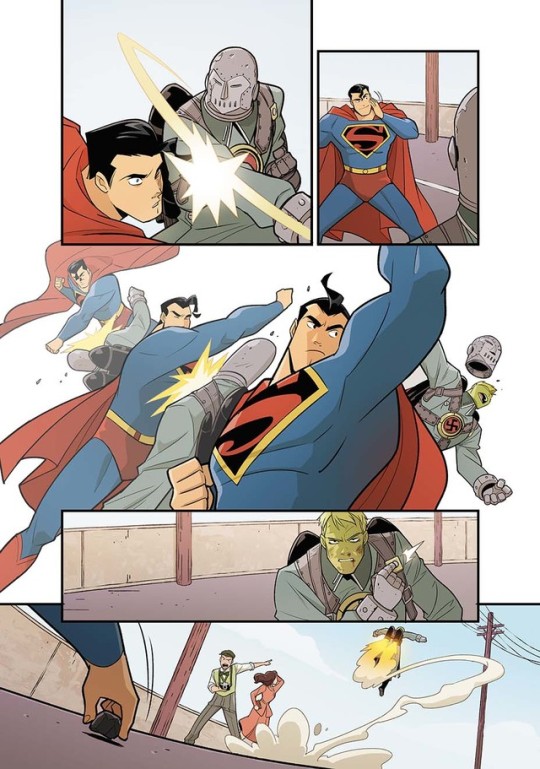
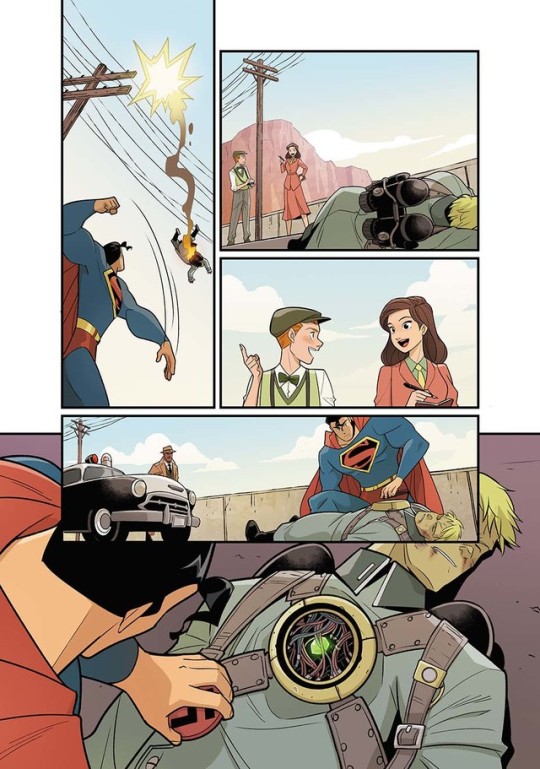



Preview Pages and Interview for SUPERMAN SMASHES THE KLAN
Superman Smashes the Klan launches Oct. 16, with the first of three 80-page perfect bound issues. The collected edition of the story will be released in 2020. DC’s official solicitation for the first issue is below, followed by artwork from the issue.
“The year is 1946, and the Lee family has moved from Metropolis’s Chinatown to the center of the bustling city. While Dr. Lee is greeted warmly in his new position at the Metropolis Health Department, his two kids, Roberta and Tommy, are more excited about being closer to their famous hero, Superman!
“While Tommy adjusts to the fast pace of the city, Roberta feels out of place, as she tries and fails to fit in with the neighborhood kids. As the Lees try to adjust to their new lives, an evil is stirring in Metropolis: the Ku Klux Klan. When the Lee family awakens one night to find a burning cross on their lawn, they consider leaving town. But the Daily Planet offers a reward for information on the KKK, and their top two reporters, Lois Lane and Clark Kent, dig into the story.
“When Tommy is kidnapped by the KKK, Superman leaps into action — with help from Roberta! But Superman is still new to his powers — he hasn’t even worked out how to fly yet, so he has to run across town. Will Superman and Roberta reach Tommy in time?
“Inspired by the 1940s Superman radio serial ‘Clan of the Fiery Cross,’ Gene Luen Yang (American Born Chinese, Boxers and Saints, The Terrifics, New Super-Man) brings us his personal retelling of the adventures of the Lee family as they team up with Superman to smash the Klan.”
I’m really curious: How did this get started? Obviously, there’s a history to the Klan of the Fiery Kross and the Superman radio show, but how did you get your in on this particular story?
I first heard about it through the book Freakonomics; they actually devote an entire chapter to the whole thing, how this one storyline in the Superman 1940s radio show dealt a huge public relations hit to the Ku Klux Klan.
I remember reading about it and learning that the incident that set the whole thing off in the original show was a Chinese American family moving into Metropolis. So, I’ve been a superhero fan since I was in the fifth grade — the very first comic I bought was a Superman comic — and I’ve been reading Superman comics since I was a little kid, and I can’t really remember any other Chinese, or Chinese American characters showing up in any of the comics that I’d read. So, it kind of piqued my interest.
Then, I started working for DC in early 2015; I did a 10-issue run on the monthly Superman comic, and after that I’ve been part of the DC comics family. I had the opportunity to have lunch with Marie Javins, who is one of the legendary editors at DC, and this came up as an idea of what to do.
I’m super excited to be working with the artists Gurihiru. I don’t know if you’re familiar with their work, but they’re so good; they’re a Japanese art studio, but it’s really just two women — one does all the pencils and the other does all the inks. Early on, the editor and I talked about going for an art style that’s just like the old Fleischer Superman cartoons but mixed with a manga influence, and I feel like they totally delivered on that. That’s exactly what they did.
The acting is so good. It looks so simple, but what they’re doing on the page is so clear.
The acting is what puts them over the top. It’s what makes them masters.
One of the things that I like about the first issue is that you show Superman as an inspirational figure not only to the "good guys," but also to Chuck, who’s the child who doesn’t necessarily understand what Superman stands for. The iconography of Superman is shown to be this nuanced thing.
One of the things about the Superman radio show, and the original version of this story, is that it actually comes relatively early in Superman’s career. He was first published in 1938, and the story was broadcast around 1946, so that’s just eight years, and he was already a worldwide phenomenon. And especially in America, he was wildly popular. But I do feel that the Superman that we all know and love today, he wasn’t quite formed yet [at that time].
There were still pieces of him that were being solidified. And as much as the radio show impacted the real world in terms of bigotry and racism, it also helped shape Superman’s character. It was at this point where Superman really did become a symbol of American tolerance, American justice and American hope.
The subject of Superman not being a fully formed character is something you play with in the text of this book, as well as the subtext; Clark is still learning who he is — his power set, his abilities and his cultural heritage. He’s literally a character in flux, just as he was at the time when the original radio show was broadcast.
The more I read about the radio show, the more fascinated I was. When Superman first appeared in 1938, he was essentially a glorified strongman, you know? He couldn’t fly. He was superfast, superstrong, he could jump high, but even then, there was a limit put on how high he could jump. It was specifically said that he could jump 20 stories.
A lot of his development actually happened in the radio show. He actually flew for the first time in the radio show; the radio show was where Kryptonite showed up for the first time. A lot of that comes from the fact that the radio show got so popular that it became a daily thing, whereas the comic was still monthly; they really needed to develop Superman — his mythology, his world — really quickly.
So, when I learned about that, I thought, this is a comic book adaptation of this old radio show — we should play with some of those elements. We should play with the fact that he doesn’t fly, or that Kryptonite is a brand-new thing.
But despite that, he remains Superman as we know him. There’s this essential Superman-ness that comes through on every page. You talked about reading Superman when you were a kid; is this something that you just inherently “get”?
My parents were born overseas, and growing up, I went through this period of time when I had a hard time vacillating between two identities. I had a Chinese identity at home, I had an American identity at school, I had two different names! When I was a kid, I did gravitate toward Superman, but when I got into my teenage years, I started getting into characters I thought were more “cool” — cool in quotes! [laughs] — but one of the things that drew me back to Superman was realizing that he was an immigrant from Krypton.
Like, all of those things: vacillating between two different identities, having two different names, having two different sets of cultural expectations. All of the realities of my childhood, all of it was encoded in Superman.
I actually have a theory about this — the reason why Superman presents himself as “perfect” is because he’s an immigrant. I saw it with my own parents; they came here and people perceived them as “foreign,” [and] they were always cognizant of this. The way they dealt with that was by trying to be perfect citizens. I think Superman does the same thing; the reason he tries to be a perfect citizen is because he knows he’s an alien. As I built a connection with the character, that’s what it became. He really became an icon for me after I saw all of this — [Jerry] Siegel and [Joe] Shuster knew all of this, they were children of immigrants. They put all of this in the character.
I think a lot of time, when we see him on cereal boxes, or whatever, we miss that, but it’s the core of the character. The core of Superman is that he’s an immigrant from Krypton.
That ties in with something else I enjoyed about the first issue — that there is so much about Superman being confused about his cultural identity. It plays against what’s going on with Tommy and Roberta’s family — it’s a connection that you’re not hitting people over the head with. You’re showing that Superman is an immigrant even as he passes as, as you said, this “perfect citizen.”
I hope so. All of that was in the character from the very beginning. His immigrant status has been there since the very beginning and is, I think, closely tied to his being an American icon. Those two things go hand-in-hand. The immigrant story and the American story are pretty much the same thing.
How much of that is present in the original story? Was the original radio serial as interested in Superman as an immigrant explicitly? Did Tommy and Roberta play such important roles, even though they were Chinese American characters?
For the radio show, I would say that the lead character was definitely Superman, and after that, the focus was on Chuck, then Tommy. Roberta, Tommy’s sister, didn’t even exist in the radio show. For me, I wanted to center the story on this Chinese American family. I really do think of this book as an Asian American book — maybe not just that, an immigrant book. By putting this Chinese American family center stage, it really highlighted the specific immigrant side of Superman.
Spinning off that, there’s the fact that this story is being published today. We’re at a point in history now where even the discussion of immigration in America is this impossibly charged topic. It feels important at this moment to have a story — specifically, to have a Superman comic — that pushes back so clearly against bigotry and racism, that does make the appeal for tolerance.
It’s not just America. You read the news about Europe, India, or the Philippines. I started this project because I thought it was something that I needed to understand. There’s a Chinese tradition that you use the events of the past as a way of talking about the present; I did come onto this project thinking about that, thinking, if I can understand the historical context that there was something about the present that I’d understand a little bit better.
One of the things that came out of this — we’re at the tail end of the third and final book right now, as we speak; I’m just about done with the revisions — and one of the things that I’ve learned is that the world learned something about tolerance after World War II. Not just America; all of us learned something about tolerance. World War II was the worst nationalistic instincts of the world come to a head — the worst instincts of our species had manifested themselves pretty much everywhere in the world. And then, this Superman story, which arrived a year after the war ended, was primed to convey the lessons the world had learned to a younger generation.
I just think that, maybe we’re so far removed from that period that we’re beginning to forget those lessons. That was the impression that I got.
Did you go into it with the idea that this was a lesson that needs to be retaught? This is, after all, a project aimed at younger readers? Were you thinking in terms of, lessons needing to be relearned in today’s culture?
To be honest, I was more going into it thinking that there were things that I personally wanted to understand better. The original storyline was very didactic, but I don’t think it was just about the lesson that was explicitly said in the story. It was also about the historical context in which that story came out. I wanted to go in to try and understand that a little bit better. I’m hoping that me wrestling with those issues comes across in the story.
You said that Chuck was one of the lead characters in the original version of the story, and one of the things that’s compelling about the first issue is Chuck’s story. He’s a character who’s leaning toward bigotry and hatred, and is pretty explicitly being taught that by his family, but you don’t write him off; there’s the implication that he can go another way, he can learn to be better.
Chuck’s a character in the original radio show, and in the comic adaptation, we kept all the big pieces of who he is. He begins as kind of a bigot, but he has an arc. To fill out that arc, I did read a book called Rising Out of Hatred, it’s written by a guy named Eli Saslow. It’s the biography of Derek Black, who is David Duke’s godson; he went from being the heir apparent of the American White Supremacy movement, and he’s the exact opposite now. When he’s not in hiding — he had to go into hiding — he’s speaking out against the views he was raised with. I read that book wanting to understand how someone could make that transition; I wanted to embed some of that in the character of Chuck.
Changing gears somewhat; you’re a National Ambassador for Young People’s Literature, and comics specifically. When you’re working on a project like this, especially on a character as iconic as Superman, is this something that you can see as a tool for new readers to use to get into, not just Superman, not just comics, but stories about things that are happening in the real world? Stories that matter.
I actually feel really lucky to be working in comics today. I think over the last, maybe 10 to 20 years, we’ve seen this shift in the public perception of comics. More and more, people are open to the idea of comics dealing with serious topics, and I hope this project fits in with that. I do think that there is a growing wave of comics that want to tackle the very heart of what it means to — do you know the book Bitter Root? It’s an Image Comics title that’s coming out right now.
Yeah, Sanford Greene and David Walker’s book.
I think that book is one of the best examples of using genre to talk about very important and serious topics. I’m trying to do something similar with this Superman book.
- Admin
981 notes
·
View notes
Text
Rivera, Kahlo, and the Detroit Murals: A History and a Personal Journey
The year 1932 was not a good time to come to Detroit, Michigan. The Great Depression cast dark clouds over the city. Scores of factories had ground to a halt, hungry people stood in breadlines, and unemployed autoworkers were selling apples on street corners to survive. In late April that year, against this grim backdrop, Diego Rivera and Frida Kahlo stepped off a train at the cavernous Michigan Central depot near the heart of the Motor City. They were on their way to the new Detroit Institute of Arts (DIA), a symbol of the cultural ascendancy of the city and its turbo-charged prosperity in better times. The next 11 months in Detroit would take them both to dazzling artistic heights and transform them personally in far-reaching, at times traumatic, ways.
I subtitle this article “a history and a personal journey.” The history looks at the social context of Diego and Frida’s defining time in the city and the art they created; the personal journey explores my own relationship to Detroit and the murals Rivera painted there. I was born and raised in the city, listening to the sounds of its bustling streets, coming of age in its diverse neighborhoods, growing up with the driving beat of its music, and living in the shadows of its factories. Detroit was a labor town with a culture of social justice and civil rights, which on occasion clashed with sharp racism and powerful corporations that defined the age. In my early twenties, I served a four-year apprenticeship to become a machine repair machinist in a sprawling multistory General Motors auto factory at Clark Street and Michigan Avenue that machined mammoth seven-liter V8 engines, stamped auto body parts on giant presses, and assembled gleaming Cadillacs on fast-moving assembly lines. At the time, the plant employed some 10,000 workers who reflected the racial and ethnic diversity of the city, as well as its tensions. The factory was located about a 20-minute walk from where Diego and Frida got off the train decades earlier but was a world away from the downtown skyscrapers and the city’s cultural center.
I grew up with Rivera’s murals, and they have run through every stage of my life. I’ve been gone from the city for many years now, but an important part of both Detroit and the murals have remained with me, and I suspect they always will. I return to Detroit frequently, and no matter how busy the trip, I have almost always found time for the murals.
In Detroit, Rivera looked outwards, seeking to capture the soul of the city, the intense dynamism of the auto industry, and the dignity of the workers who made it run. He would later say that these murals were his finest work. In contrast, Kahlo looked inward, developing a haunting new artistic direction. The small paintings and drawings she created in Detroit pull the viewer into a strange and provocative universe. She denied being a Surrealist, but when André Breton, a founder of the movement, met her in Mexico, he compared her work to a “ribbon around a bomb” that detonated unparalleled artistic freedom (Hellman & Ross, 1938).
Rivera, at the height of his fame, embraced Detroit and was exhilarated by the rhythms and power of its factories (I must admit these many years later I can relate to that response). He was fascinated by workers toiling on assembly lines and coal-fired blast furnaces pouring molten metal around the clock. He felt this industrial base had the potential to create material abundance and lay the foundation for a better world. Sixty percent of the world’s automobiles were built in Michigan at that time, and Detroit also boasted other state-of-the-art industry, from the world’s largest stove and furnace factory to the main research laboratories for a global pharmaceutical company.
“Detroit has many uncommon aspects,” a Michigan guidebook produced by the Federal Writers Project pointed out, “the staring rows of ghostly blue factory windows at night; the tired faces of auto workers lighted up by simultaneous flares of match light at the end of the evening shift; and the long, double-decker trucks carrying auto bodies and chassis” (WPA, 1941:234). This project produced guidebooks for every state in the nation and was part of the Works Progress Administration (WPA), a New Deal Agency that sought to create jobs for the unemployed, including writers and artists. I suspect Rivera would have embraced the approach, perhaps even painted it, had it then existed.
Detroit was a rough-hewn town that lacked the glitter and sophistication of New York or the charm of San Francisco, yet Rivera was inspired by what he saw. In his “Detroit Industry” murals on the soaring inner walls of a large courtyard in the center of the DIA, Rivera portrayed the iconic Ford Rouge plant, the world’s largest and most advanced factory at the time. “[These] frescoes are probably as close as this country gets to the ceiling of the Sistine Chapel,” New York Times art critic Roberta Smith wrote eight decades later (Smith, 2015).
The city did not speak to Kahlo in the same way. She tolerated Detroit — sometimes barely, other times with more enthusiasm — rather than embracing it. Kahlo was largely unknown when she came to Detroit and felt somewhat isolated and disconnected there. She painted and drew, explored the city’s streets, and watched films — she liked Chaplin’s comedies in particular — in the movie theaters near the center of the city, but she admitted “the industrial part of Detroit is really the most interesting side” (Coronel, 2015:138).
During a personally traumatic year — she had a miscarriage that went seriously awry in Detroit, and her mother died in Mexico City — she looked deeply into herself and painted searing, introspective works on small canvases. In Detroit, she emerged as the Frida Kahlo who is recognized and revered throughout the world today. While Vogue still identified her as “Madame Diego Rivera” during her first New York exhibition in 1938, the New York Times commented that “no woman in art history commands her popular acclaim” in a 2019 article (Hellman & Ross, 1938; Farago, 2019).
My emphasis will be on Rivera and the “Detroit Industry” murals, but Kahlo’s own work, unheralded at the time, has profoundly resonated with new audiences since. While in Detroit, they both inspired, supported, influenced, and needed each other.
Prelude
Diego and Frida married in Mexico on August 21, 1929. He was 43, and she was 22 — although their maturity, in her view, was inverse to their age. Their love was passionate and tumultuous from the beginning. “I suffered two accidents in my life,” she later wrote, “one in which a streetcar knocked me down … the other accident is Diego” (Rosenthal, 2015:96).
They shared a passion for Mexico, particularly the country’s indigenous roots, and a deep commitment to politics, looking to the ideals of communism in a turbulent and increasingly dangerous world (Rosenthal, 2015:19). Rivera painted a major set of murals — 235 panels — in the Ministry of Education in Mexico City between 1923 and 1928. When he signed each panel, he included a small red hammer and sickle to underscore his political allegiance. Among the later panels was “In the Arsenal,” which included images of Frida Kahlo handing out weapons, muralist David Alfaro Siqueiros in a hat with a red star, and Italian photographer Tina Modotti holding a bandolier.
The politics of Rivera and Kahlo ran deep but didn’t exactly follow a straight line. Kahlo herself remarked that Rivera “never worried about embracing contradictions” (Rosenthal, 2015:55). In fact, he seemed to embody F. Scott Fitzgerald’s notion that “the test of a first-rate intelligence is the ability to hold two opposed ideas in the mind at the same time and still retain the ability to function” (Fitzgerald, 1936).
Their art, however, ultimately defined who they were and usually came out on top when in conflict with their politics. When the Mexican Communist Party was sharply at odds with the Mexican government in the late 1920s, Rivera, then a Party member, nonetheless accepted a major government commission to paint murals in public buildings. The Party promptly expelled him for this act, among other transgressions (Rosenthal, 2015:32).
Diego and Frida came to San Francisco in November 1930 after Rivera received a commission to paint a mural in what was then the San Francisco Stock Exchange. He had already spent more than a decade in Europe and another nine months in the Soviet Union in 1927. In contrast, this was Kahlo’s first trip outside Mexico. The physical setting in San Francisco, then as now, was stunning — steep hills at the end of a peninsula between the Pacific and the Bay — and they were intrigued and elated just to be there. The city had a bohemian spirit and a working-class grit. Artists and writers could mingle with longshoremen in bars and cafes as ships from around the world unloaded at the bustling piers. At the time, California was in the midst of an “enormous vogue of things Mexican,” and the couple was at the center of this mania (Rosenthal, 2015:32). They were much in demand at seemingly endless “parties, dinners, and receptions” during their seven-month stay (Rosenthal, 2015:36). A contradiction with their political views? Not really. Rivera felt he was infiltrating the heart of capitalism with more radical ideas.
Rivera’s commission produced a fresco on the walls of the Pacific Stock Exchange, “Allegory of California” (1931), a paean to the economic dynamism of the state despite the dark economic clouds already descending. Rivera would then paint several additional commissions in San Francisco before leaving. While compelling, these murals lacked the power and political edge of his earlier work in Mexico or the extraordinary genius of what was to come in Detroit.
While in San Francisco, Rivera and Kahlo met Helen Wills Moody, a 27-year-old world-class tennis player, who became the central model for the Allegory mural. She moved in rarified social and artistic circles, and as 1930 drew to a close, she introduced the couple to Wilhelm Valentiner, the visionary director of the Detroit Institute of Arts (DIA), who had rushed to San Francisco to meet Rivera when he learned of the artist’s arrival.
Valentiner was “a German scholar, a Rembrandt specialist, and a man with extraordinarily wide tastes,” according to Graham W.J. Beal, who himself revitalized the DIA as director in the 21st century. “Between 1920 and the early 1930s, with the help of Detroit’s personal wealth and city money, Valentiner transformed the DIA … into one of the half-dozen top art collections in the country,” a position the museum continues to hold today (Beal, 2010:34). The museum director and the artist shared an unusual kinship. “The revolutions in Germany and Mexico [had] radicalized [both],” wrote Linda Downs, a noted curator at the DIA (Downs, 2015:177). Little more than a decade later, “the idea of the mural commission reinvigorated them to create a highly charged monumental modern work that has contributed greatly to the identity of Detroit” (Downs, 2015:177).
When Valentiner and Rivera met, the economic fallout of the Depression was hammering both Detroit and its municipally funded art institute. The city was teetering at the edge of bankruptcy in 1932 and had slashed its contribution to the museum from $170,000 to $40,000, with another cut on the horizon. Despite this dismal economic terrain, Valentiner was able to arrange a commission for Rivera to paint two large-format frescoes in the Garden Court at the new museum building, which had opened in 1927. Edsel Ford, the son of Henry Ford and a major patron of the DIA, pledged $10,000 for the project — a truly princely sum at that moment — and would double his contribution as Rivera’s vision and the scale of the project expanded (Rosenthal, 2015:51). Edsel also played an unheralded role in support of the museum through the economic traumas to come.
A discussion of Rivera’s mural commission gets a bit ahead of our story, so let’s first look at Detroit’s explosive economic growth in the early years of the 20th century. This industrial transformation would provide the subject and the inspiration for Rivera’s frescoes.
The Motor City and the Great Depression
At the turn of the 20th century, Detroit “was a quiet, tree-shaded city, unobtrusively going about its business of brewing beer and making carriages and stoves” (WPA, 1941:231). Approaching 300,000 residents, Detroit was the 13th-largest city in the country (Martelle, 2012:71). A future of steady growth and easy prosperity seemed to beckon.
Instead, Henry Ford soon upended not only the city, but much of the world. He was hardly alone as an auto magnate in the area: Durant, Olds, the Fisher Brothers, and the Dodge Brothers, among others, were also in or around Detroit. Ford, however, would go beyond simply building a successful car company: he unleashed explosive growth in the auto industry, put the world on wheels, and became a global folk hero to many, yet some were more critical. The historian Joshua Freeman points out that “Aldous Huxley’s Brave New World (1932) depicts a dystopia of Fordism, a portrait of life A.F. — the years “Anno Ford,” measured from 1908, when the Model T was introduced — with Henry Ford the deity” (Freeman, 2018:147).
Ford combined three simple ideas and pursued them with razor-sharp, at times ruthless, intensity: the Model T, an affordable car for the masses; a moving assembly line that would jump-start productivity growth; and the $5 day for workers, double the prevailing wage in the industry. This combination of mass production and mass consumption — Fordism — allowed workers to buy the products they produced and laid the basis for a new manufacturing era. The automobile age was born.
The $5 day wasn’t altruism for Ford. The unrelenting pace and control of the assembly line was intense — often unbearable — even for workers who had grown up with back-breaking work: tilling the farm, mining coal, or tending machines in a factory. Annual turnover approached 400 percent at Ford’s Highland Park plant, and daily absenteeism was high. In response, Ford introduced the unprecedented new wage on January 12, 1914 (Martelle, 2012:74).
The press and his competitors denounced Ford — claiming this reckless move would bankrupt the industry — but the day the new rate began, 10,000 men arrived at the plant in the winter darkness before dawn. Despite the bitter cold, Ford security men aimed fire hoses to disperse the crowd. Covered in freezing water, the men nonetheless surged forward hoping to grasp an elusive better future for themselves and their families.
Here is where I enter the picture, so to speak. One of the relatively few who did get a job that chaotic day was Philip Chapman. He was a recent immigrant from Russia who had married a seamstress from Poland named Sophie, a spirited, beautiful young woman. They had met in the United States. He wound up working at Ford for 33 years — 22 of them at the Rouge plant — on the line and on machines. They were my grandparents.
By 1929, Detroit was the industrial capital of the world. It had jumped its place in line, becoming the fourth-largest city in the United States — trailing only New York, Chicago, and Philadelphia — with 1.6 million people (Martelle, 2012:71). “Detroit needed young men and the young men came,” the WPA Michigan guidebook writers pointed out, and they emphasized the kaleidoscopic diversity of those who arrived: “More Poles than in the European city of Poznan, more Ukrainians than in the third city of the Ukraine, 75,000 Jews, 120,000 Negroes, 126,000 Germans, more Bulgarians, [Yugoslavians], and Maltese than anywhere else in the United States, and substantial numbers of Italians, Greeks, Russians, Hungarians, Syrians, English, Scotch, Irish, Chinese, and Mexicans” (WPA, 1941:231). Detroit was third nationally in terms of the foreign-born, and the African American population had soared from 6,000 in 1910 to 120,000 in 1930 (WPA, 1941:108), part of a journey that would ultimately involve more than six million people moving from the segregated, more rural South to the industrial cities of the North (Trotter, 2019:78).
DIA planners projected that Detroit would become the second-largest U.S. city by 1935 and that it could surpass New York by the early 1950s. “Detroit grew as mining towns grow — fast, impulsive, and indifferent to the superficial niceties of life,” the Michigan Guidebook writers concluded (WPA, 1941:231).
The highway ahead seemed endless and bright. The city throbbed with industrial production, the streetcars and buses were filled with workers going to and from work at all hours, and the noise of stamping presses and forges could be heard through open windows in the hot summers. Cafes served dinner at 11 p.m. for workers getting off the afternoon shift and breakfast at 5 a.m. for those arriving for the day shift. Despite prohibition, you could get a drink just about any time. After all, only a river separated Detroit from Canada, where liquor was still legal.
Rivera’s biographer and friend Bertram Wolfe wrote of “the tempo, the streets, the noise, the movement, the labor, the dynamism, throbbing, crashing life of modern America” (Wolfe, as cited in Rosenthal, 2015:65). The writers of the Michigan guidebook had a more down-to-earth view: “‘Doing the night spots’ consists mainly of making the rounds of beer gardens, burlesque shows, and all-night movie houses,” which tended to show rotating triple bills (WPA, 1941:232).
Henry Ford began constructing the colossal Rouge complex in 1917, which would employ more than 100,000 workers and spread over 1,000 acres by 1929. “It was, simply, the largest and most complicated factory ever built, an extraordinary testament to ingenuity, engineering, and human labor,” Joshua Freeman observed (Freeman, 2018:144). The historian Lindy Biggs accurately described the complex as “more like an industrial city than a factory” (Biggs, as cited in Freeman, 2018:144).
The Rouge was a marvel of vertical integration, making much of the car on site. Giant Ford-owned freighters would transport iron ore and limestone from Minnesota and Michigan’s Upper Peninsula down through the Great Lakes, along the St. Clair and Detroit Rivers, and then across the Rouge River to the docks of the plant. Seemingly endless trains would bring coal from West Virginia and Ohio to the plant. Coke ovens, blast furnaces, and open hearths produced iron and steel; rolling mills converted the steel ingots into long, thin sheets for body parts; foundries molded iron into engine blocks that were then precision machined; enormous stamping presses formed sheets of steel into fenders, hoods, and doors; and thousands of other parts were machined, extruded, forged, and assembled. Finished cars drove off the assembly line a little more than a day after the raw materials had arrived at the docks.
In 1928, Vanity Fair heralded the Rouge as “the most significant public monument in America, throwing its shadow across the land probably more widely and more intimately than the United States Senate, the Metropolitan Museum of Art, the Statue of Liberty.... In a landscape where size, quantity, and speed are the cardinal virtues, it is natural that the largest factory turning out the most cars in the least time should come to have the quality of America’s Mecca, toward which the pious journey for prayer” (Jacob, as cited in Lichtenstein, 1995:13). My grandfather, I suspect, had a more prosaic goal: he needed a job, and Ford paid well.
Despite tough conditions in the plant, workers were proud to work at “Ford’s,” as people in Detroit tended to refer to the company. They wore their Ford badge on their shirts in the streetcars on the way to work or on their suits in church on Sundays. It meant something to have a job there. Once through the factory gate, however, the work was intense and often dangerous and unhealthy. Ford himself described repetitive factory work as “a terrifying prospect to a certain kind of mind,” yet he was firmly convinced strict control and tough discipline over the average worker was necessary to get anything done (Ford, as cited in Martelle, 2012:73). He combined the regimentation of the assembly line with increasingly autocratic management, strictly and often harshly enforced. You couldn’t talk on the line in Ford plants — you were paid to work, not talk — so men developed the “Ford whisper” holding their heads down and barely moving their lips. The Rouge employed 1,500 Ford “Service Men,” many of them ex-convicts and thugs, to enforce discipline and police the plant.
At a time when economic progress seemed as if it would go on forever, the U.S. stock market drove over a cliff in October 1929, and paralysis soon spread throughout the economy. Few places were as shaken as Detroit. In 1929, 5.5 million vehicles were produced, but just 1.4 million rolled off Detroit’s assembly lines three years later in 1932 (Martelle, 2012:114). The Michigan jobless rate hit 40 percent that year, and one out of three Detroit families lacked any financial support (Lichtenstein, 1995). Ford laid off tens of thousands of workers at the Rouge. No one knew how deep the downturn might go or how long it would last. What increasingly desperate people did know is that they had to feed their family that night, but they no longer knew how.
On March 7, 1932 — a bone-chilling day with a lacerating wind — 3,000 desperate, unemployed autoworkers met near the Rouge plant to march peaceably to the Ford Employment Office. Detroit police escorted the marchers to the Dearborn city line, where they were confronted by Dearborn Police and armed Ford Service Men. When the marchers refused to disperse, the Dearborn police fired tear gas, and some demonstrators responded with rocks and frozen mud. The marchers were then soaked with water from fire hoses and shot with bullets. Five workers were killed, 19 wounded by gunfire, and dozens more injured. Communists had organized the march, but a Michigan historical marker makes the following observation: “Newspapers alleged the marchers were communists, but they were in fact people of all political, racial, and ethnic backgrounds.” That marker now hangs outside the United Auto Workers Local 600 union hall, which represents workers today at the Rouge plant.
Five days later, on March 12, thousands of people marched in downtown Detroit to commemorate the demonstrators who had been killed. Although Rivera was still in New York, he was aware of the Ford Hunger March before it took place and told Clifford Wight, his assistant, that he was eager “not [to] miss…[it] on any account” (Rosenthal, 2015:51). Both he and Kahlo had marched with workers in Mexico and embraced their causes. Rivera had captured their lives as well as their protests in his murals in Mexico.
As it turned out, they missed both the march and the commemoration. Instead, the following month Kahlo and Rivera’s train pulled into the Michigan Central Depot, where Wilhelm Valentiner met them. They were taken to the Ford-owned Wardell Hotel next to the Detroit Institute of Arts. The DIA was the anchor of a grass-lined and tree-shaded cultural center several miles north of downtown. The Ford Highland Park Plant, where the automobile age began with the Model T and the moving assembly line, was four miles further north on the same street. Less than a mile northwest was the massive 15-story General Motors Building, the largest office building in the United States when it was completed in 1922, designed by the noted industrial architect Albert Khan, who also created the Rouge. Huge auto production complexes such as Dodge Main or Cadillac Motor — where I would serve my apprenticeship decades later — were not far away.
Valentiner had written Rivera stating, “The Arts Commission would be pleased if you could find something out of the history of Detroit, or some motif suggesting the development of industry in this town. But in the end, they decided to leave it entirely to you” (Beal, 2010:35). Beal points out “that what Valentiner had in mind at the time may have been something like the Helen Moody Wills paintings, something that had an allegorical slant to it. They were to get something completely different” (Beal, 2010:35). Edsel Ford emphasized he wanted Rivera to look at other industries in Detroit, such as pharmaceuticals, and provided a car and driver for Rivera and Kahlo to see the plants and the city.
But when Rivera visited the Rouge plant, he was mesmerized. He saw the future here, despite the fact that the plant had been hard hit by the Depression: the complex had been shuttered for the last six months of 1931, and thousands of workers had been let go before he arrived (Rosenthal, 2015:67). His fascination with machinery, his respect for workers, and his politics fused in an extraordinary artistic vision, which he filled with breathtaking technical detail. He had found his muse.
Rivera took on the seemingly impossible task of capturing the sprawling Rouge plant in frescoes. The initial commission of two large-format frescoes rapidly expanded to 27 frescoes of various sizes filling the entire room from floor to ceiling. Rivera spent the next two months at the manufacturing complex drawing, pacing, photographing, viewing, and translating these images into large drawings — “cartoons” — as the plans for the frescoes. He demonstrated an exceptional ability to retain in his head — and, I suspect, in his dreams — what he would paint.
Rivera’s Vast Masterpieces
Rivera’s “Detroit Industry” murals are anchored in a specific time and place — a sprawling iconic factory, the Depression decade, and the Motor City — yet they achieve the universal in a way that transcends their origins. Rivera painted workers toiling on assembly lines amid blast furnaces pouring molten iron into cupolas, and through the alchemy of his genius, the art still powerfully — even urgently — speaks to us today. The murals celebrate the contribution of workers, the power of industry, and the promise and peril of science and technology. Rivera weaves together Aztec myths, indigenous world views, Mexican culture, and U.S. industry in a visual tour-de-force that delights, challenges, and provokes. The art is both accessible and profound. You can enjoy it for an afternoon or intensely study it for a lifetime with a sense of constant discovery.
Roberta Smith points out that the murals “form an unusually explicit, site-specific expression of the reciprocal bond between an art museum and its urban setting” (Smith, 2015). Over time, the frescoes have emerged as a visible and vital part of the city, becoming part of Detroit’s DNA. Rivera’s art has been both witness to and, more recently, a participant in history. When he began the project in late spring 1932, Detroit was tottering at the edge of insolvency, and 80 years later, the murals witnessed the city skidding into the largest municipal bankruptcy in history in 2013. A deep appreciation for the murals and their close identification with the spirit and hope of Detroit may have contributed to saving the museum this second time around.
I still vividly remember my own reaction when I first saw the murals. As a young boy, the Rouge, the auto industry, and Detroit seemed to course through our lives. My grandfather Philip Chapman, who was hired at Ford’s Highland Park plant in 1914, wound up spending most of his working life on the line at the Rouge. As a young boy, I watched my grandmother Sophie pack his lunch and fill his thermos with hot coffee before dawn as he hurried to catch the first of three buses that would take him to the plant. When my father, Max, came to Detroit three decades later in the mid-1940s to marry my mother, Rose — they had met on a subway while she was visiting New York City, where he lived — he worked on the line at a Chrysler plant on Jefferson Avenue.
One weekend, when I was 10 or 11 years old, my father took me to see the murals. He drove our 1950 Ford down Woodward Avenue, a broad avenue that bisected the city from the Detroit River to its northern border at Eight Mile Road. Woodward seemed like the main street of the world at the time; large department stores — Hudson’s was second only to Macy’s in size and splendor — restaurants, movie theaters, and office buildings lined both sides of the street north from the river. Detroit had the highest per capita income in the country, a palpable economic power seen in the scale of the factories and the seemingly endless numbers of trucks rumbling across the city to transport parts between factories and finished vehicles to dealers.
We walked up terraced white steps to the main entrance of the Detroit Institute of Arts, an imposing Beaux-Arts building constructed with Vermont marble in what had become the city’s cultural center. As we entered the building, the sounds of the city disappeared. We strolled the gleaming marble floors of the Great Hall, a long gallery topped far above by a beautiful curved ceiling with light flowing through large windows. Imposing suits of medieval armor stood guard in glass cases on either side of us as we crossed the Hall, passed under an arch, and entered a majestic courtyard.
We found ourselves in what is now called the Rivera Court, surrounded on all sides by the “Detroit Industry” murals. The impact was startling. We weren’t simply observing the frescoes, we were enveloped by them. It was a moment of wonder as we looked around at what Rivera had created. Linda Downs captured the feeling: “Rivera Court has become the sanctuary of the Detroit Institute of Arts, a ‘sacred’ place dedicated to images of workers and technology” (Downs, 1999:65). I couldn’t have articulated this sentiment then, but I certainly felt it.
The size, scale, form, pulsing activity, and brilliant color of the paintings deeply impressed me. I saw for the first time where my grandfather went every morning before dawn and why he looked so drawn every night when he came home just before dinner. Many years later, I began to appreciate the art in a much deeper way, but the thrill of walking into the Rivera Court on that first visit has never left. I came to realize that an indelible dimension of great art is a sense of constant discovery and rediscovery. The murals captured the spirit of Detroit then and provide relevance and insight for the times we live in today.
Beal points out that Rivera “worked in a heroic, realist style that was easily graspable” (Beal, 2010:35). A casual viewer, whether a schoolboy or an autoworker from Detroit or a tourist from France, can enjoy the art, yet there is no limit to engaging the frescoes on many deeper levels. In contrast, “throughout Western history, visual art has often been the domain of the educated or moneyed elite,” Jillian Steinhauer wrote in the New York Times. “Even when artists like Gustave Courbet broke new ground by depicting working-class people, the art itself still wasn’t meant for them” (Steinhauer, 2019). Rivera upended this paradigm and sought to paint public art for workers as well as elites on the walls of public buildings. By putting these murals at the center of a great museum in the 1930s through the efforts of Wilhelm Valentiner and Edsel Ford — and more recently, under Graham Beal and the current director Salvador Salort-Pons — the Detroit Institute of Arts opened itself and the murals to new Detroit populations. Detroit is now 80-percent African American, the metropolitan area has the highest number of Arab Americans in the United States, and the Latino population is much larger than when Rivera painted, yet the murals retain their allure and meaning for new generations.
Upon entering the Rivera Court, the viewer confronts two monumental murals facing each other on the north and south walls. The murals not only define the courtyard, they draw you into the engine and assembly lines deep inside the Rouge. The factory explodes with cacophonous activity. The production process is a throbbing, interconnected set of industrial activities. Intense heat, giant machines, flaming metal, light, darkness, and constant movement all converge. Undulating steel rail conveyors carry parts overhead. There were 120 miles of conveyors in the Rouge at the time; they linked all aspects of production and provide a thematic unity to the mural. And even though he’s portraying a production process in Detroit, Rivera’s deep appreciation of Mexican culture and heritage infuses the frescoes. An Aztec cosmology of the underworld and the heavens runs in long panels spanning the top of the main murals and similar imagery appears throughout the frescoes.
On the north wall, a tightly packed engine assembly line, with workers laboring on both sides, is flanked by two huge machine tools — 20 feet or so high — machining the famed Ford V8 engine blocks. Workers in the foreground strain to move heavy cast-iron engine blocks; muscles bulge, bodies tilt, shoulders pull in disciplined movement. These workers are not anonymous. At the center foreground of the north wall, with his head almost touching a giant spindle machine, is Paul Boatin, an assistant to Rivera who spent his working life at the Rouge. He would go on to become a United Auto Workers (UAW) organizer and union leader. Boatin had been present at the Ford Hunger March on that disastrous day in March 1932 and still choked up talking about it many decades later in an interview in the film The Great Depression (1990).
In the foreground, leaning back and pulling an engine block with a white fedora on his head may have been Antonio Martínez, an immigrant from Mexico and the grandfather of Louis Aguilar. A reporter for the Detroit News, Aguilar describes how fierce, at times ugly, pressures during the Great Depression forced many Mexicans to leave Detroit and return to their homeland. The city’s Mexican population plummeted from 15,000 at the beginning of the 1930s to 2,000 at the end of the decade. If the figure in the mural is not his grandfather, Aguilar writes “let every Latino who had family in Detroit around 1932 and 1933 declare him as their own” (Aguilar, 2018).
A giant blast furnace spewing molten metal reigns above the engine production, which bears a striking resemblance to a Charles Sheeler photo of one of the five Rouge blast furnaces. The flames are so intense, and the men so red, you can almost feel the heat. In fact, the process is truly volcanic and symbolic of the turbulent terrain of Mexico itself. It brings to mind Popocatépetl, the still-active 18,000-foot volcano rising to the skies near Mexico City. To the left, above the engine block line, green-tinted workers labor in a foundry, one of the dirtiest, most unhealthy, most dangerous jobs. Meanwhile, a tour group observes the process. Among them in a black bowler hat is Diego Rivera himself.
On the south wall, workers toil on the final assembly line just before the critical “body drop,” where the body of a Model B Ford is lowered to be bolted quickly to the car frame on a moving assembly line below. Once again, through his perspective Rivera draws you into the line. A huge stamping press to the right forms fenders from sheets of steel like those produced in the Rouge facilities. Unlike most of the other machines Rivera portrays, which are state of the art, this press is an older model, selected because of its stylized resemblance to an ancient sculpture of Coatlicue, the Aztec goddess of life and death (Beale, 2010:41; Downs, 1999:140, 144).
On the left is another larger tour group, which includes a priest and Dick Tracy, a classic cartoon character of the era. The Katzenjammer Kids — more comic icons of the time — are leaning on the wall watching the assembly line move. The eyes of most of the visitors seem closed, as if they were physically present, but not seeing the intense, occasionally brutal, activity before them. Rivera, in effect, is giving us a few winks and a nod with cartoon characters and unobservant tourists.
~
Harley Shaiken · Fall 2019.
1 note
·
View note
Text
THE COPACABANA
1940 - 2020

On May 26, 2020 it was announced that the legendary Copacabana in New York City has closed.

The club was originally named for a neighborhood of Rio de Janeiro, Brazil, known for its crescent-shaped beach, one of the most famous in the world.

The Club was popularized in song, screen, stage, and television.
"It looked like what everybody's idea of what ‘I Love Lucy’ was." ~ Johnny Mathis, singer

On “I Love Lucy” Ricky’s nightclub, The Tropicana, had decor that was influenced by The Copacabana, although its name was derived by the infamous Havana nightspot.

The Copacabana was mentioned in the very first aired episode “The Girls Want To Go To A Nightclub” (ILL S1;E1) in 1951; the Copacabana was that nightclub! Sadly, the girls end up celebrating Fred and Ethel’s anniversary at Madison Square Garden, instead.
ETHEL: “It was going to be the Copacabana.”
LUCY (wistfully): “Gee...the Copacabana!”

The Copacabana had Brazilian decor and Latin-themed orchestras, although the menu featured Chinese food! The club was also known for its chorus line of Copacabana Girls, who had pink hair and elaborate sequined costumes, mink panties and brassieres, and fruited turbans, not unlike the one Lucy wore in “Be A Pal” (ILL S1;E2).

In that episode, Lucy is impersonates Carmen Miranda, who starred in the 1947 film Copacabana featuring Groucho Marx and the world-famous Copa Girls.

In 1952′s “The Mustache” (ILL S1;E29), Ricky shows a talent scout his scrapbooks and brags that, in addition to appearing on Broadway, he has played the Copacabana. Desi Arnaz used his real life credits for Ricky’s.

Arnaz performed at the Copacabana in the summer of 1946 to coincide with his new film Cuban Pete.

Las Vegas’s Sands Hotel named their lounge the Copa Room in honor of the New York nightspot. In 1958′s “Lucy Hunts Uranium” (LDCH S1;E3) Ricky Ricardo headlines at the Sands’ Copa Room. The tie-in was not doubt thanks to the Sands General Manager Jack “Mr. Entertainment” Entratter (1914-71), who was previously the manager of the Copacabana. Entratter designed the Copa Room to replicate the Brazilian decor at the NYC club and also imported the Copa Girls to Nevada. In real life, Desi Arnaz also performed there. It was demolished with the hotel in 1996. In 1981, Sands Atlantic City also opened a Copa Room. The New Jersey location closed in 2006.

The original Copacabana was mentioned again in a 1964 episode of “The Lucy Show” when Lucy Carmichael’s new torch singer tenant (Roberta Schaeffer) auditions for a job at the Copa with Lucy, Viv, and Mr. Mooney as back-up!




In real life, Lucy and Desi were often spotted at the Copacabana during its first years of business.

In 2012, a second official Copacabana was opened in Fort Lauderdale, Florida, but quickly closed a few months later.

Like the iconic Brown Derby restaurant in California, which also figured into the “Lucy” legacy, The Copa operated in several locations over the years.
It first opened on November 10, 1940, at 10 East 60th Street.
In 1992, the club moved from its original location of over 50 years to 617 West 57th Street.
In 2001, the club was forced to move for a third time to West 34th Street and Eleventh Avenue on the west side of Manhattan, when its landlord terminated its lease early to build office towers on the site.
On January 20, 2007, the club announced that it would have to move by July 1 because its current location was condemned due to the construction of the extension of the IRT subway. From late 2007 until the club reopened in 2011, the club was sharing space with the Columbus 72 nightclub, which shares the same owners.
On July 12, 2011, the club re-opened to the public in Times Square at 268 West 47th Street.
Although its final location is now “closed for good” - owners announced their hopes to re-open yet again at a yet-to-be-determined location in 2021.

This collectors plate from the Hamilton Collection was titled Night at the Copa, although the moment depicted is from “The Diet” (ILL S1;E3) in 1951.
#Copacabana#New York City#Night Club#I Love Lucy#Lucille Ball#Desi Arnaz#the lucy show#The Copa#Copa Girls#Carmen Miranda#Vivian Vance#William Frawley#Gale Gordon#Lucy Ricardo#Ricky Ricardo#TV#Film
5 notes
·
View notes